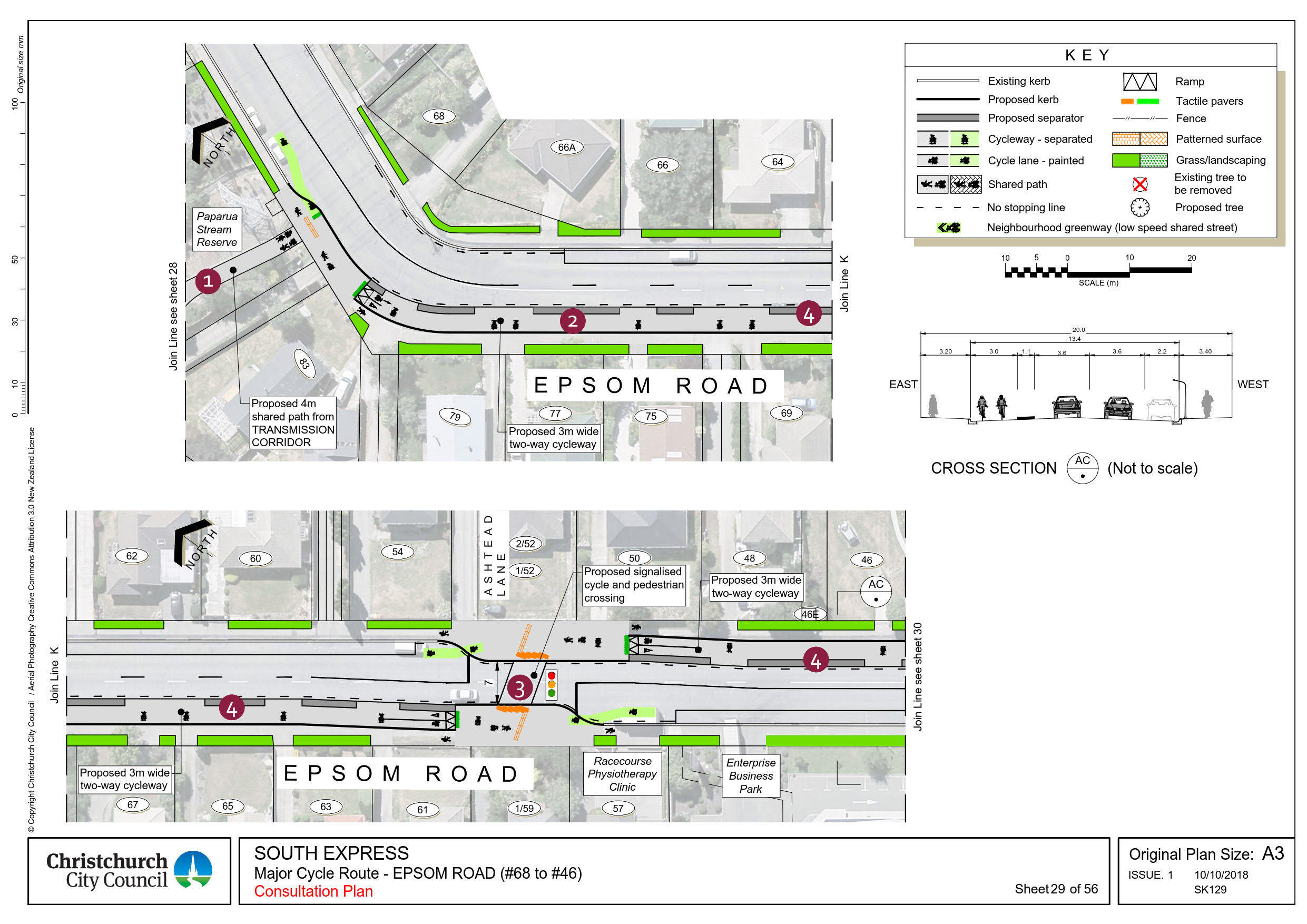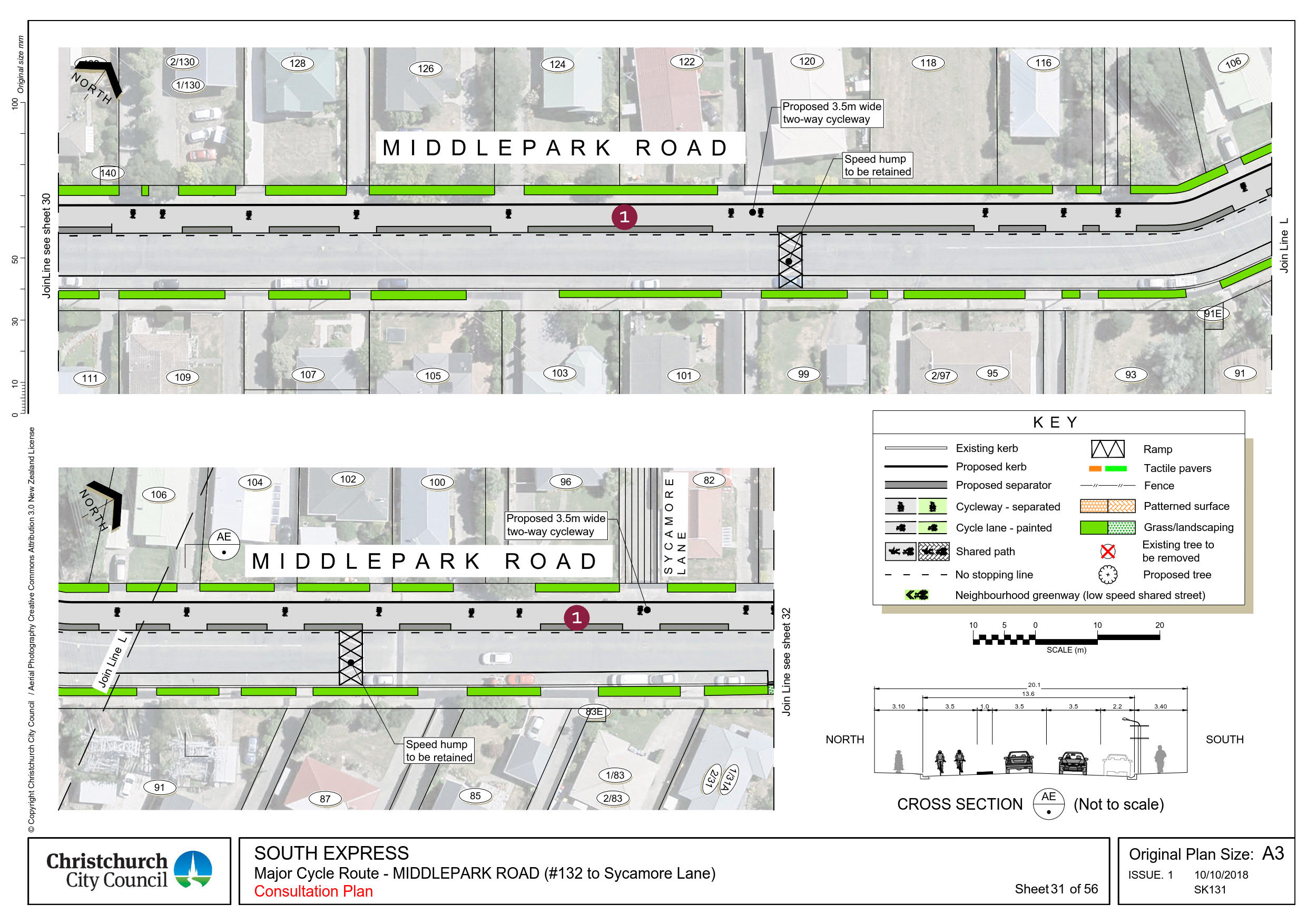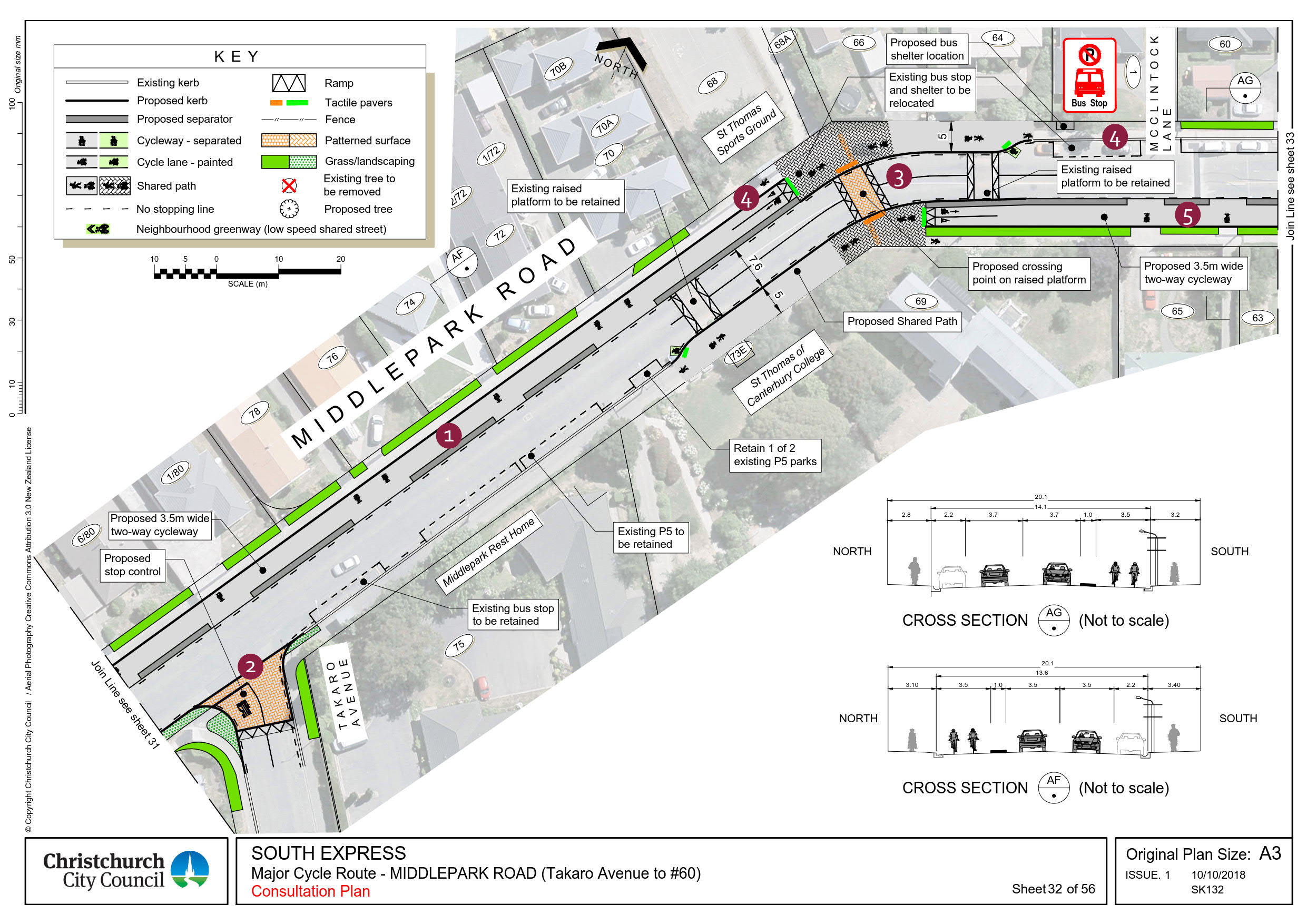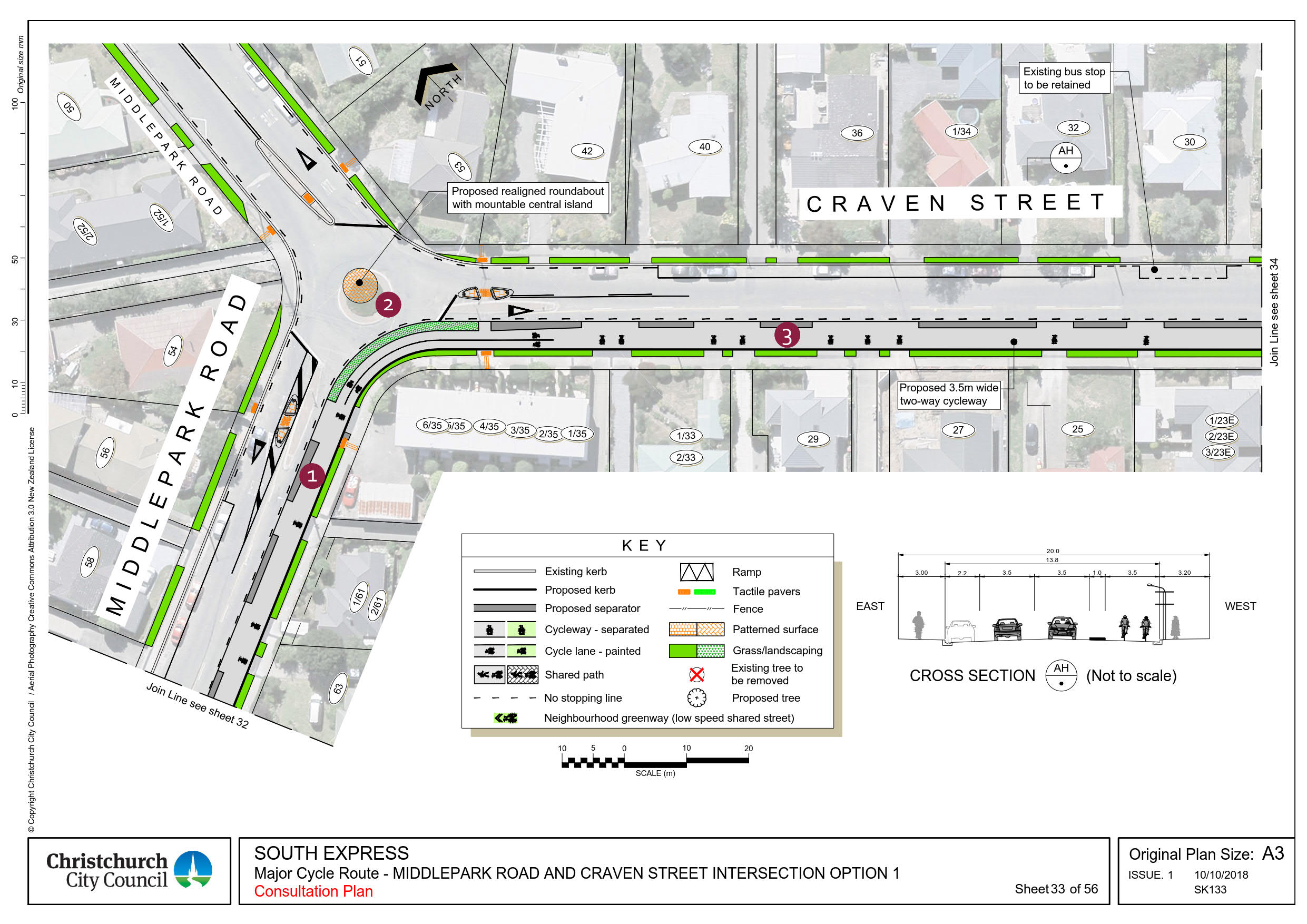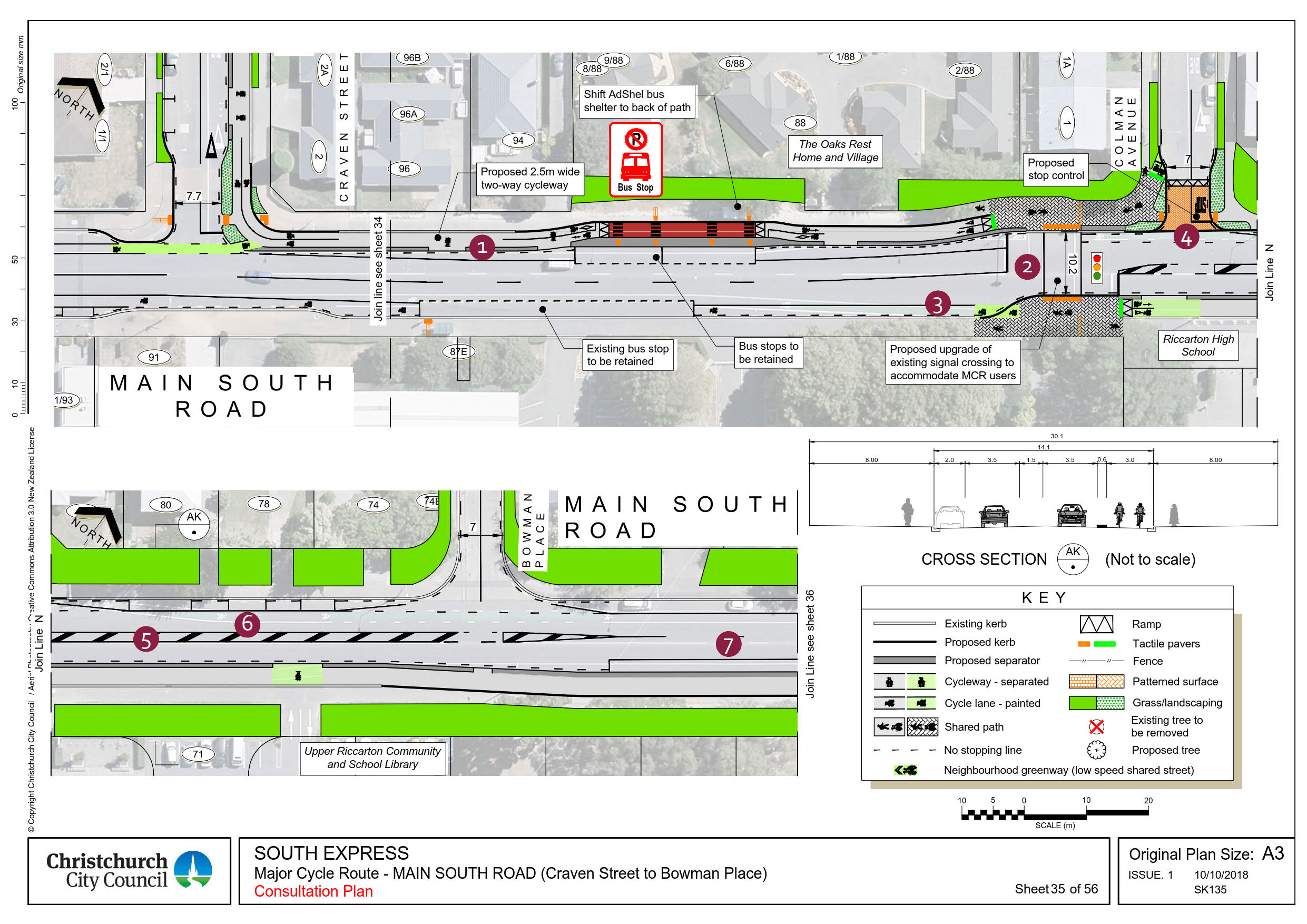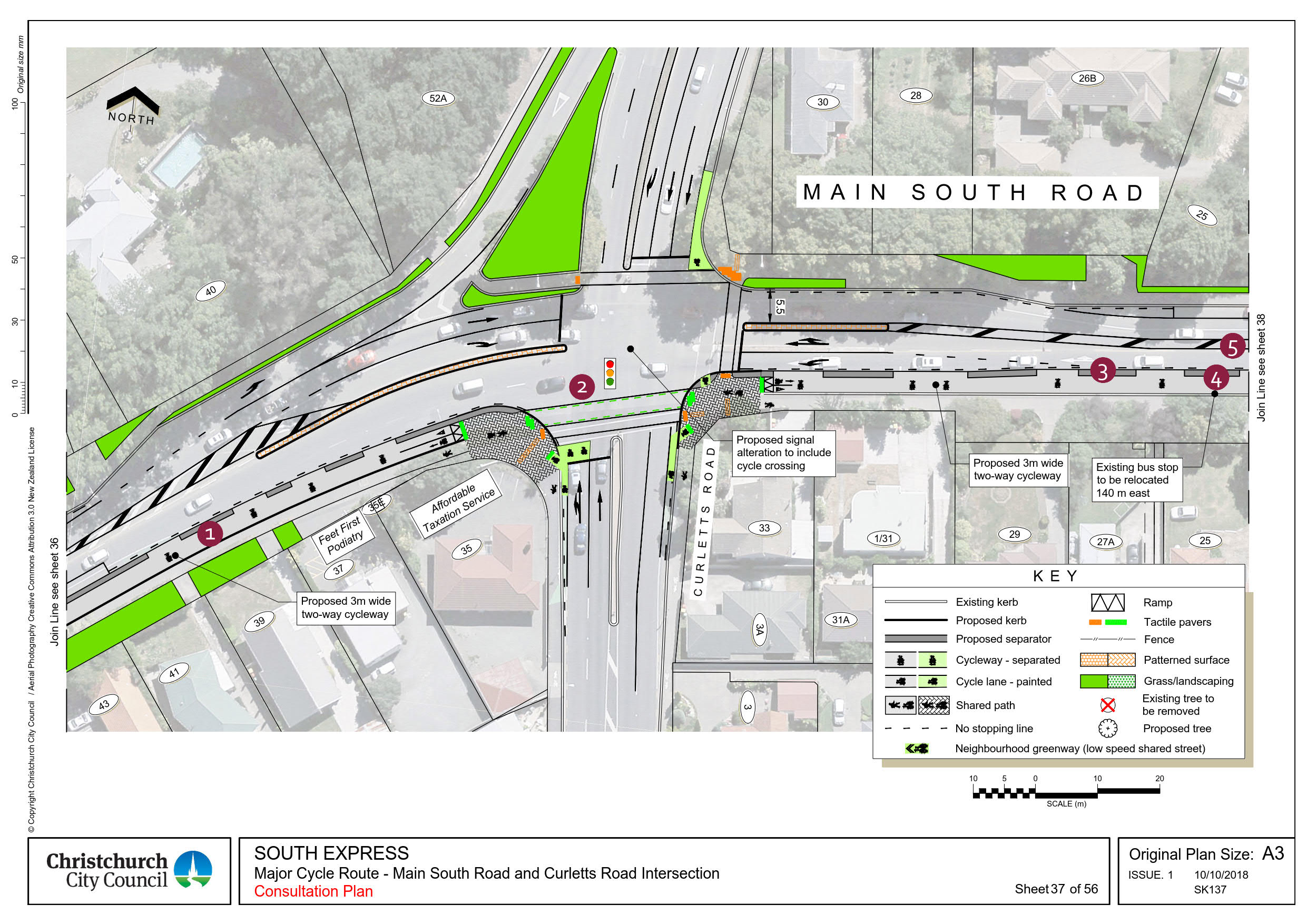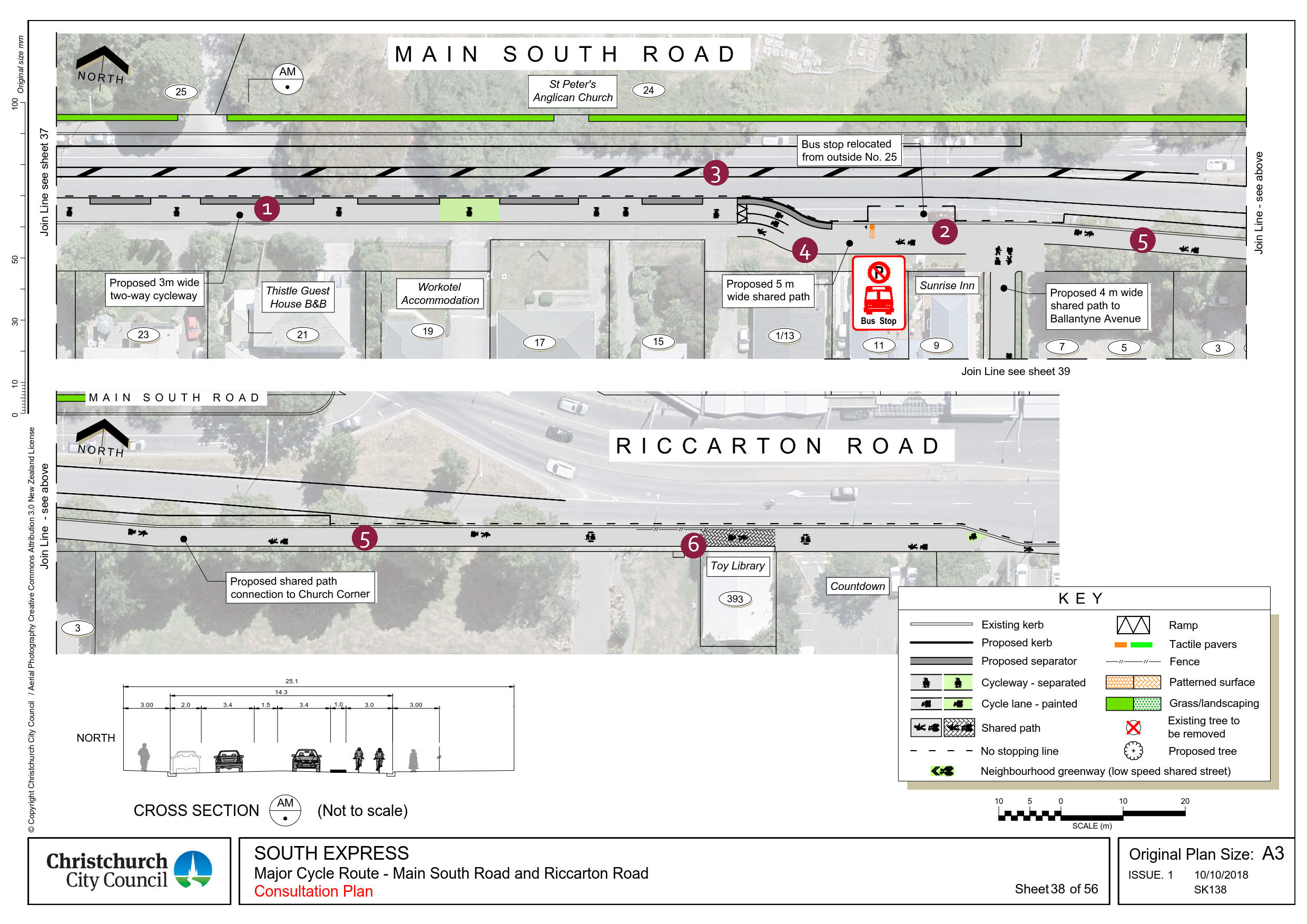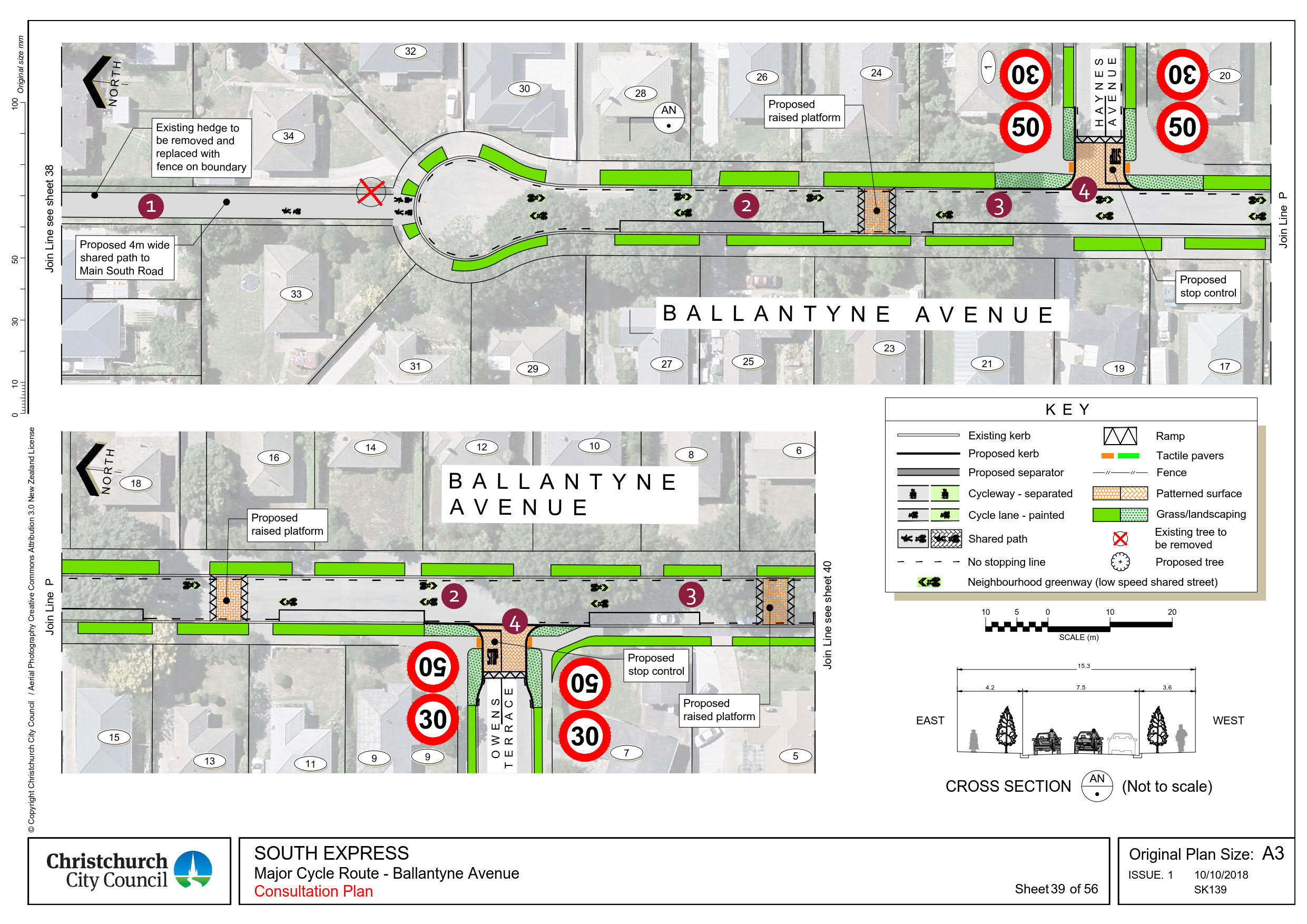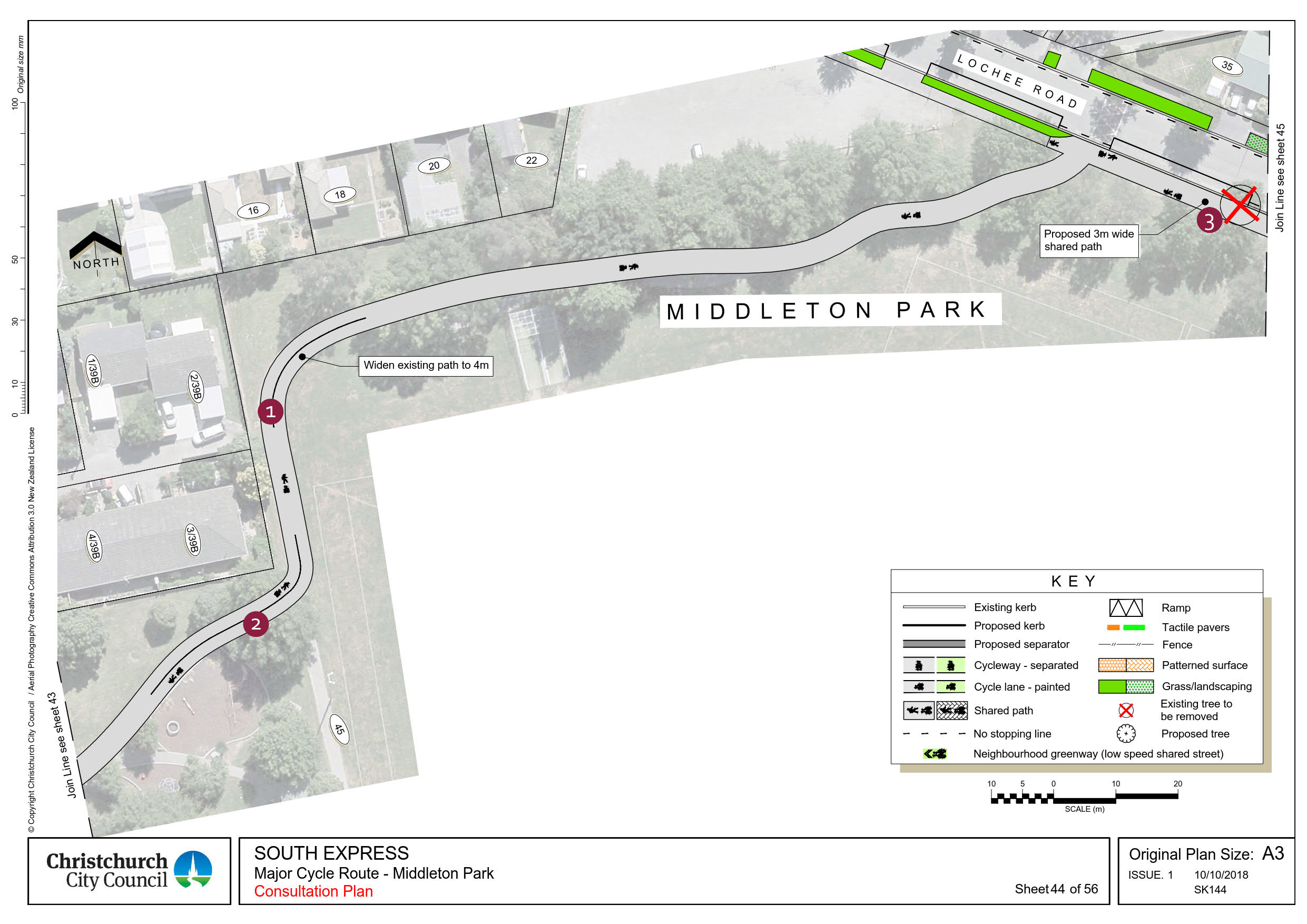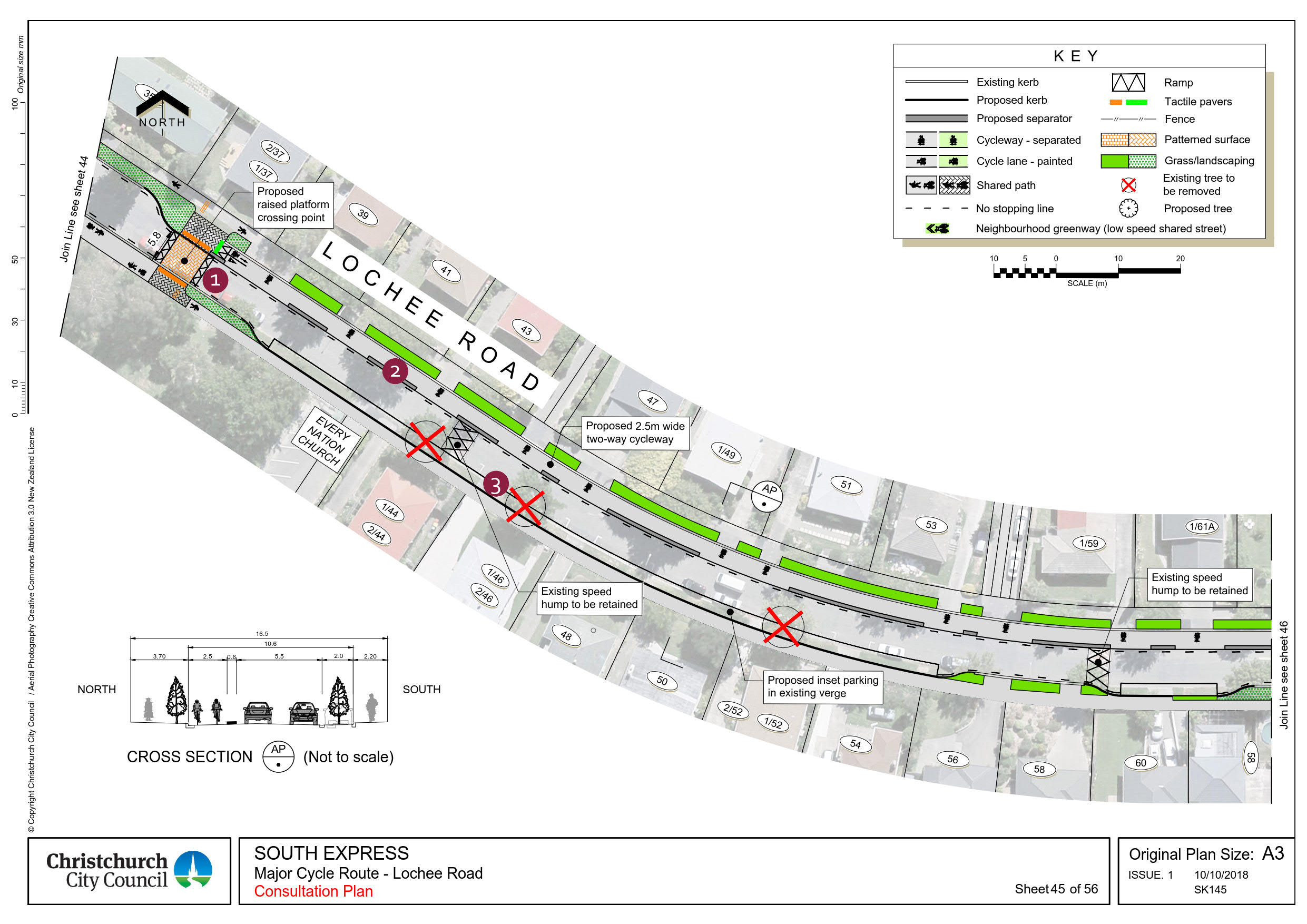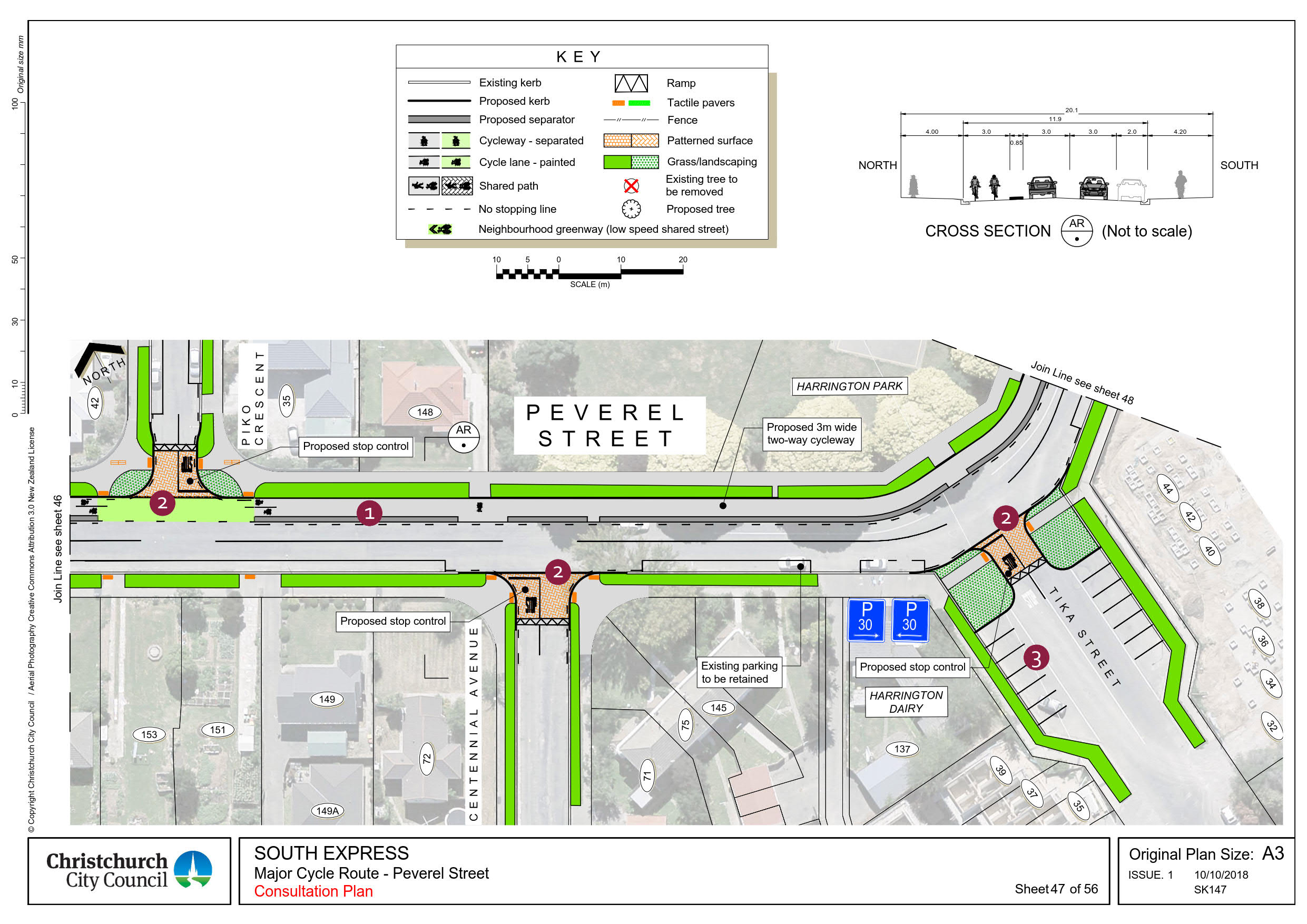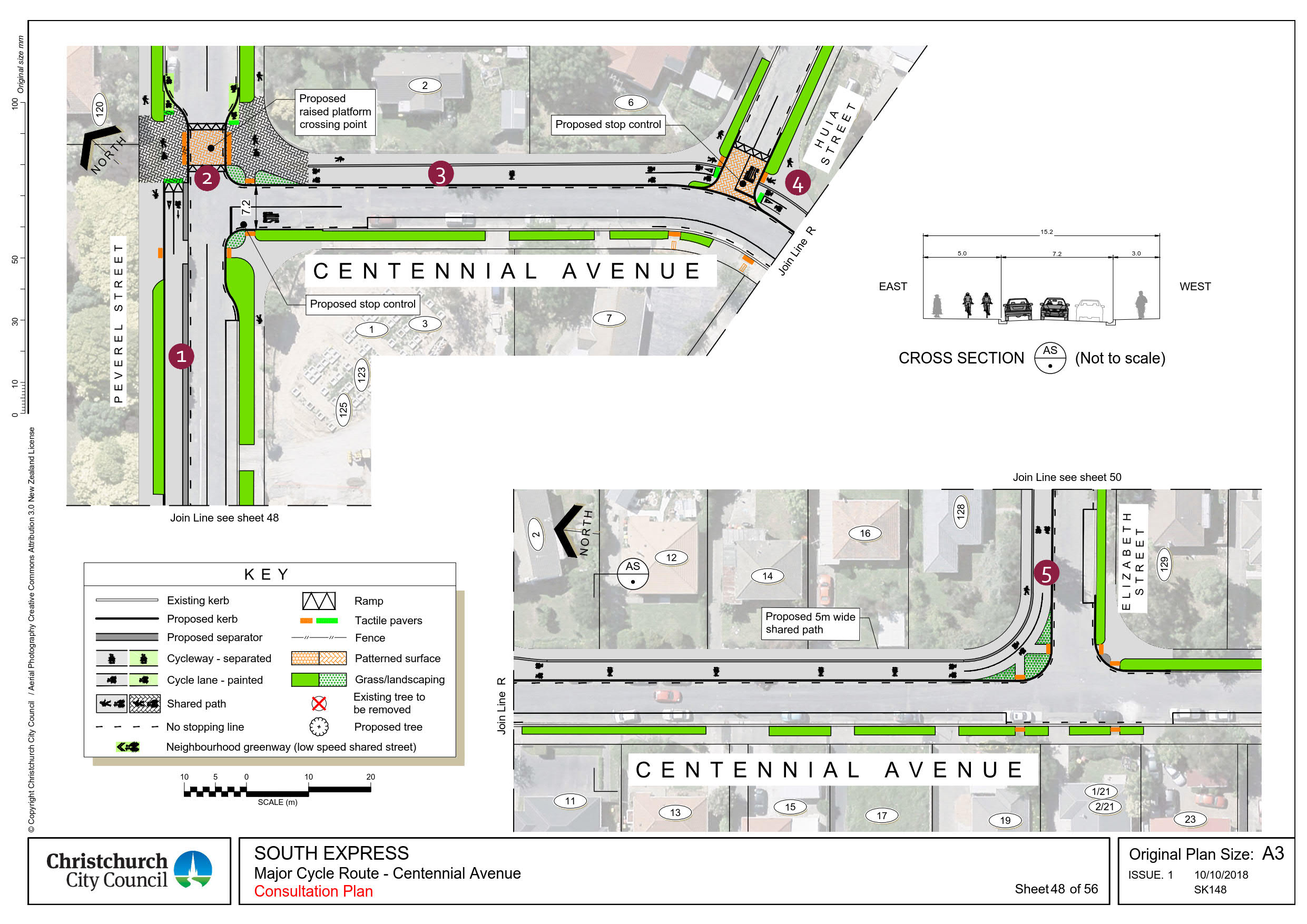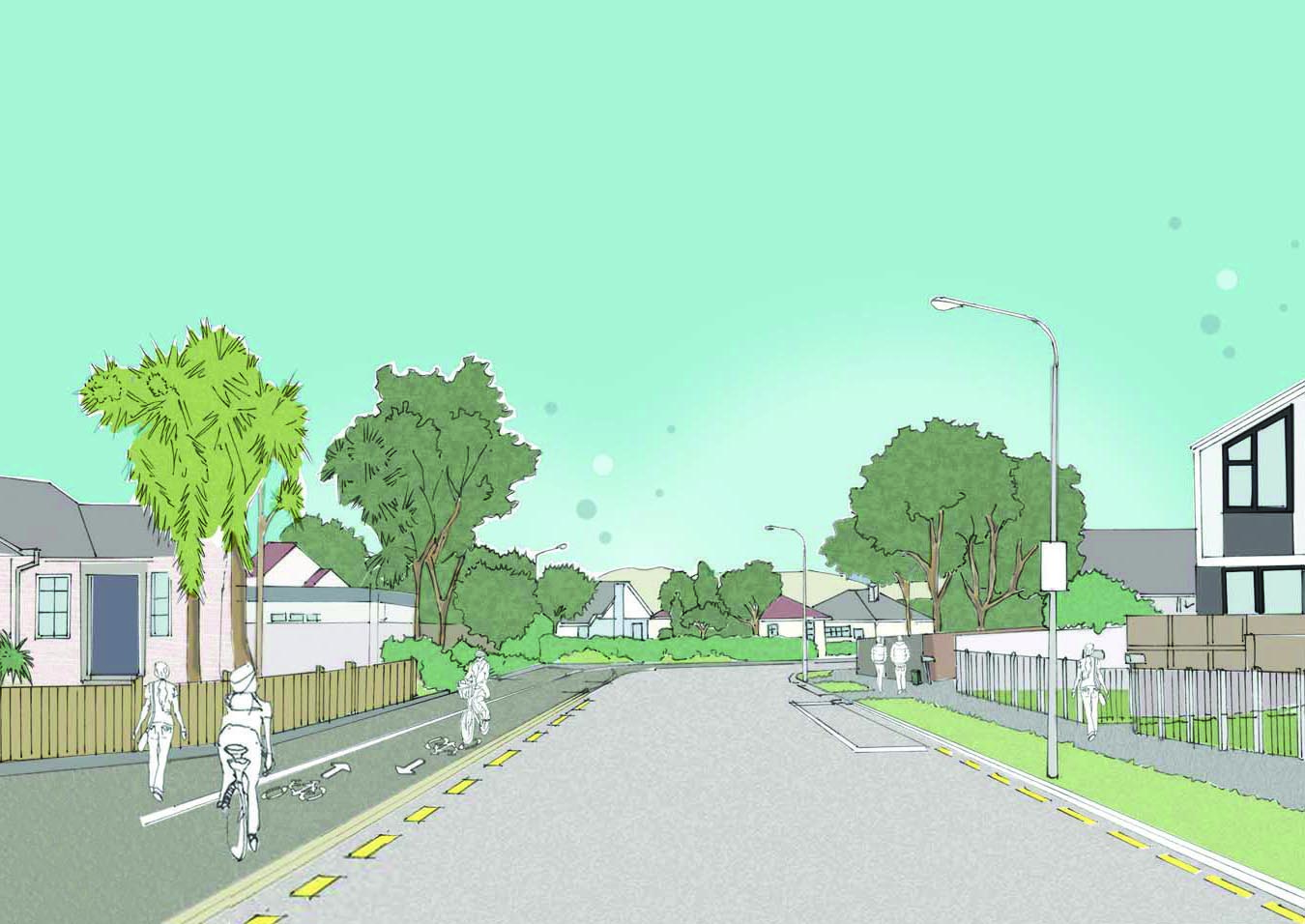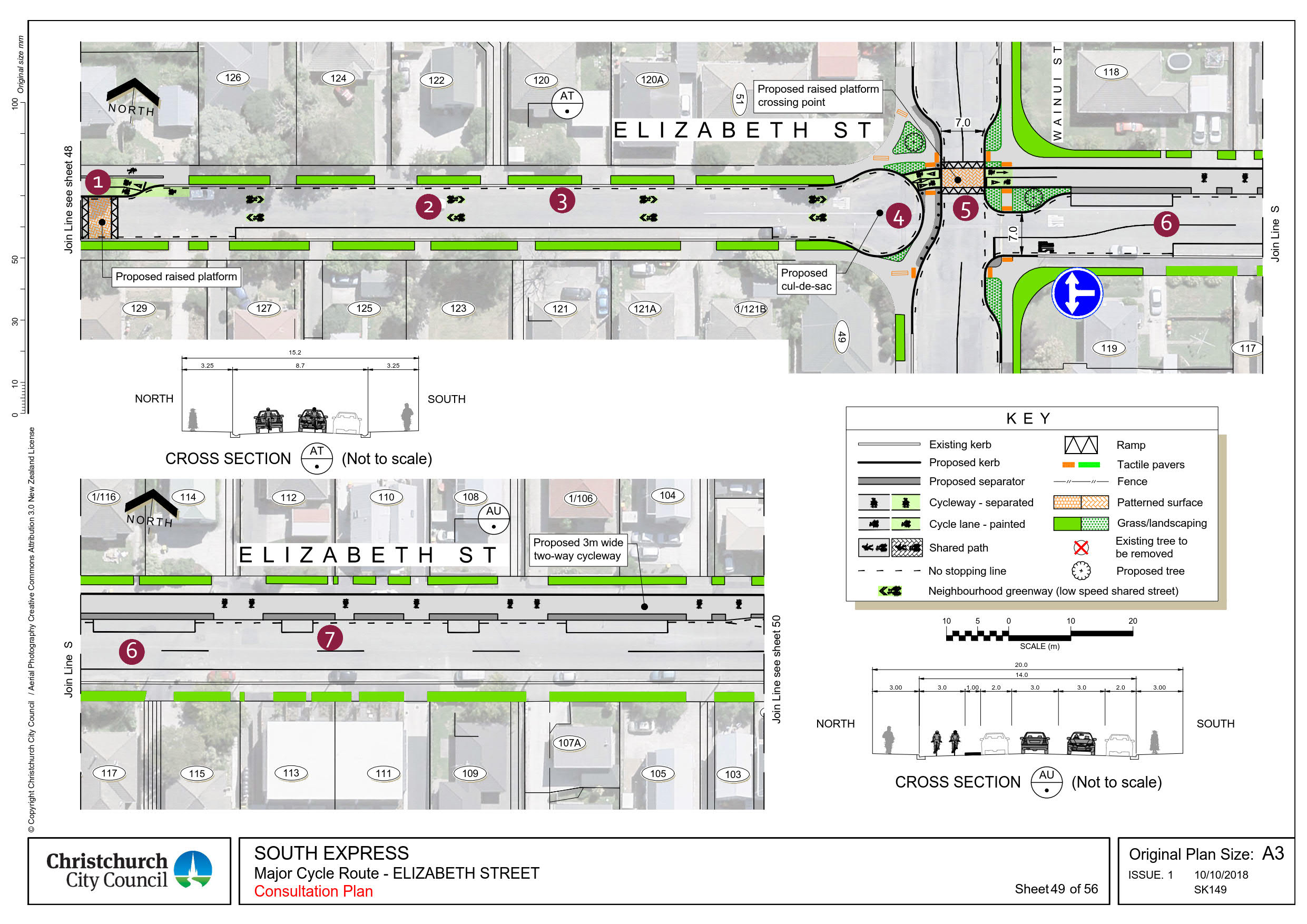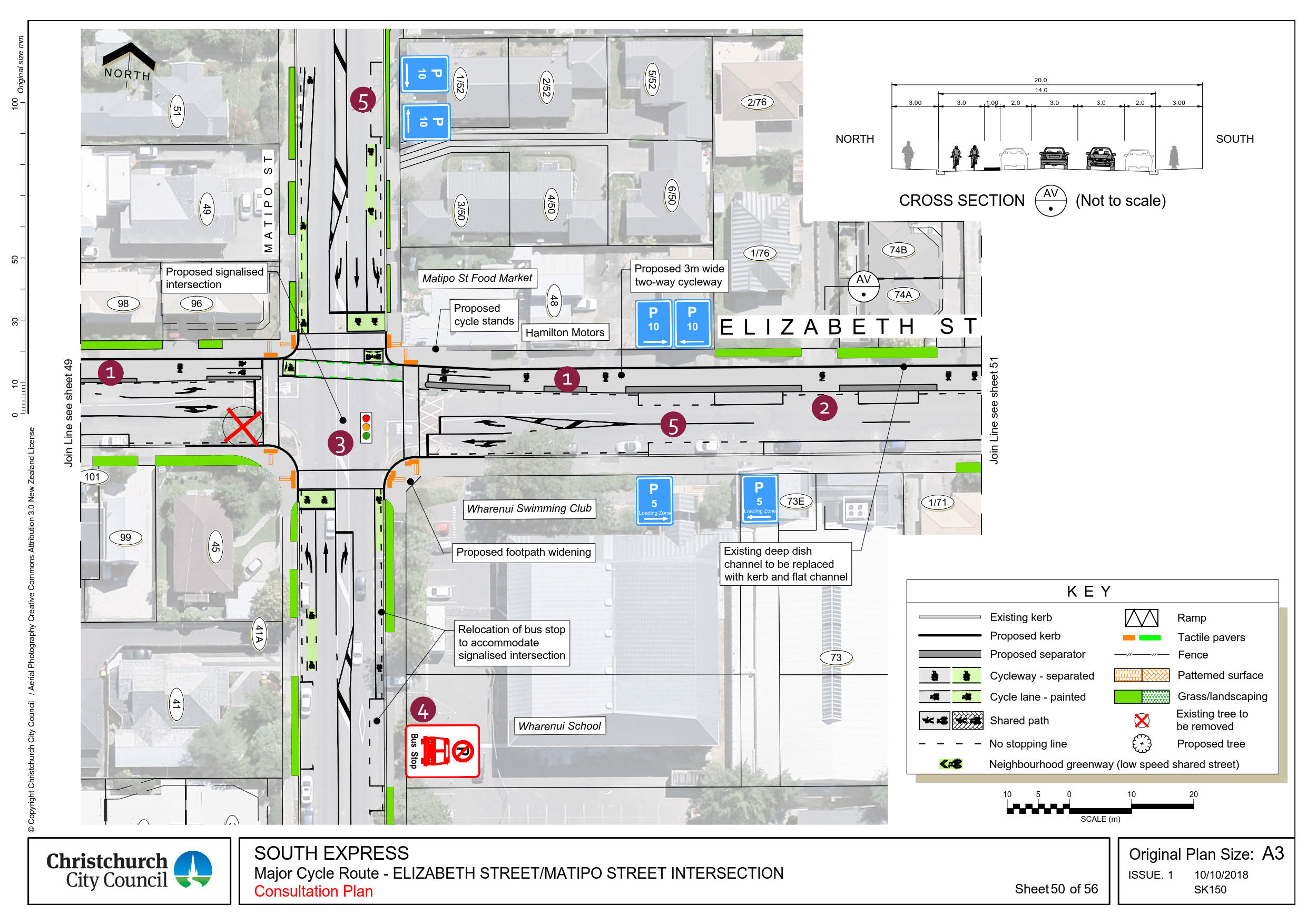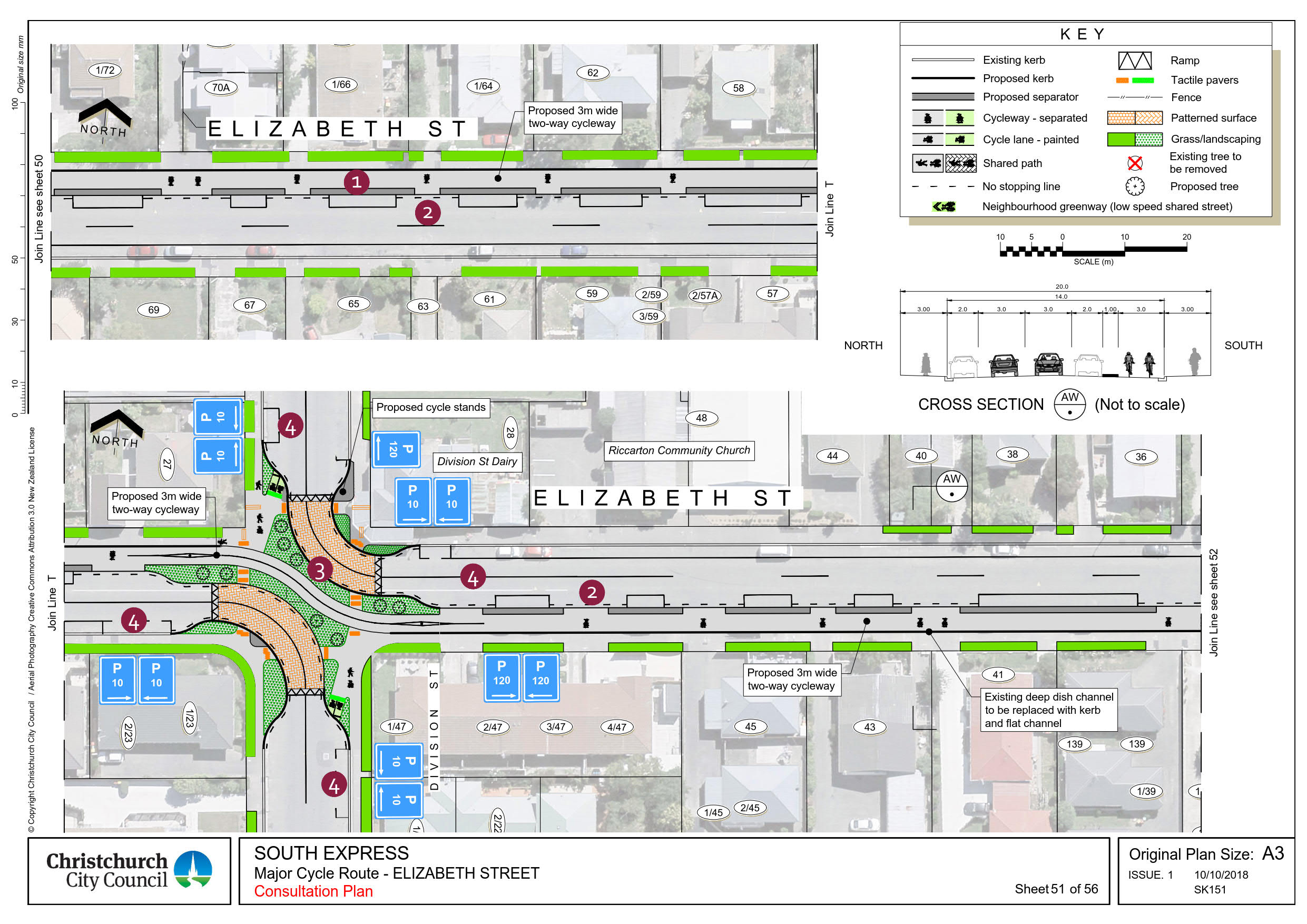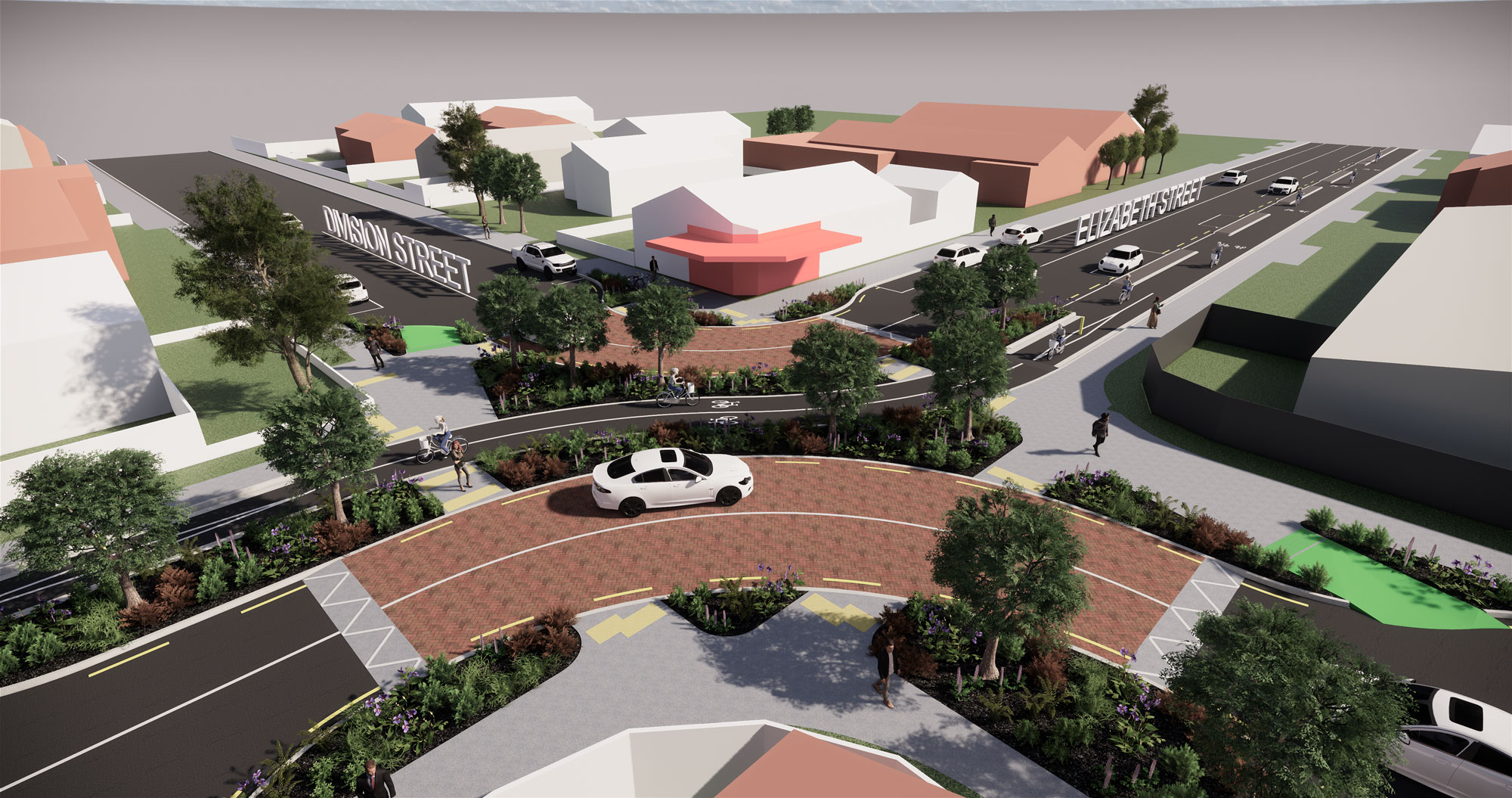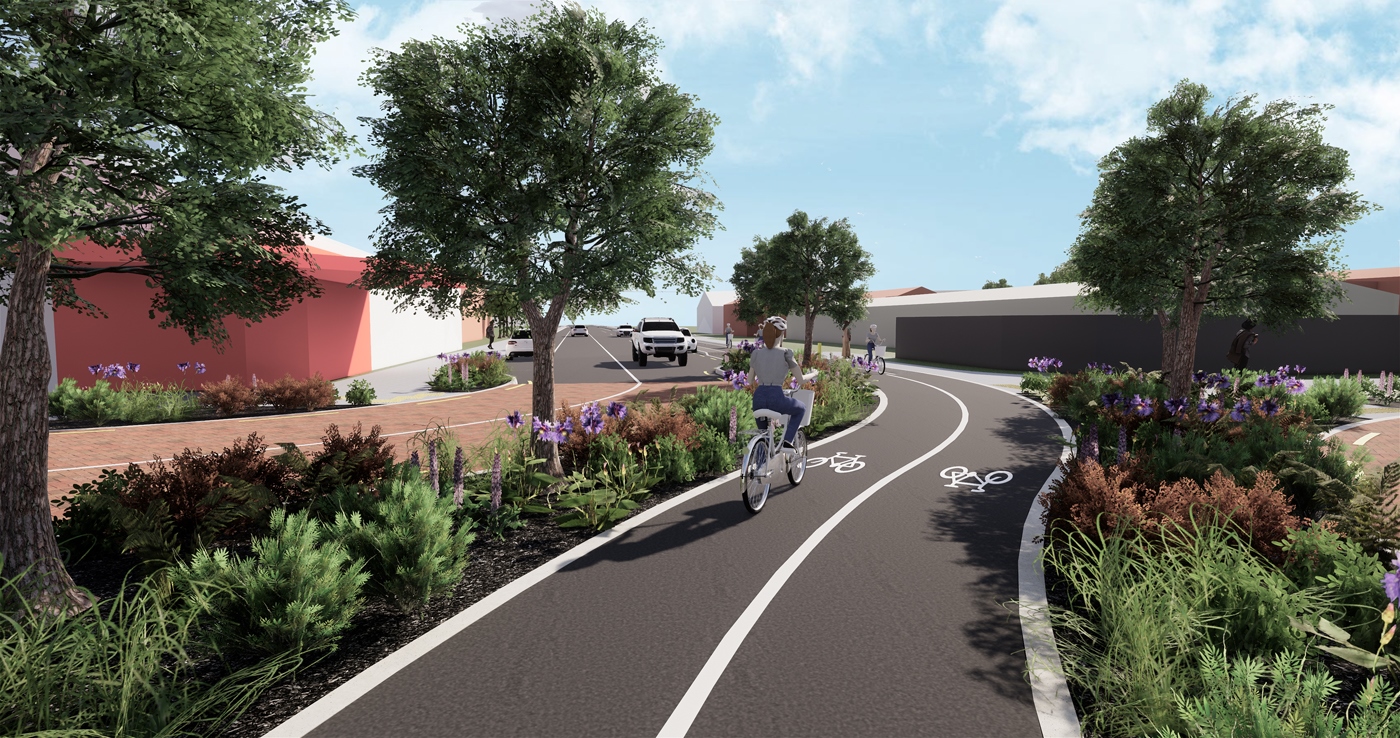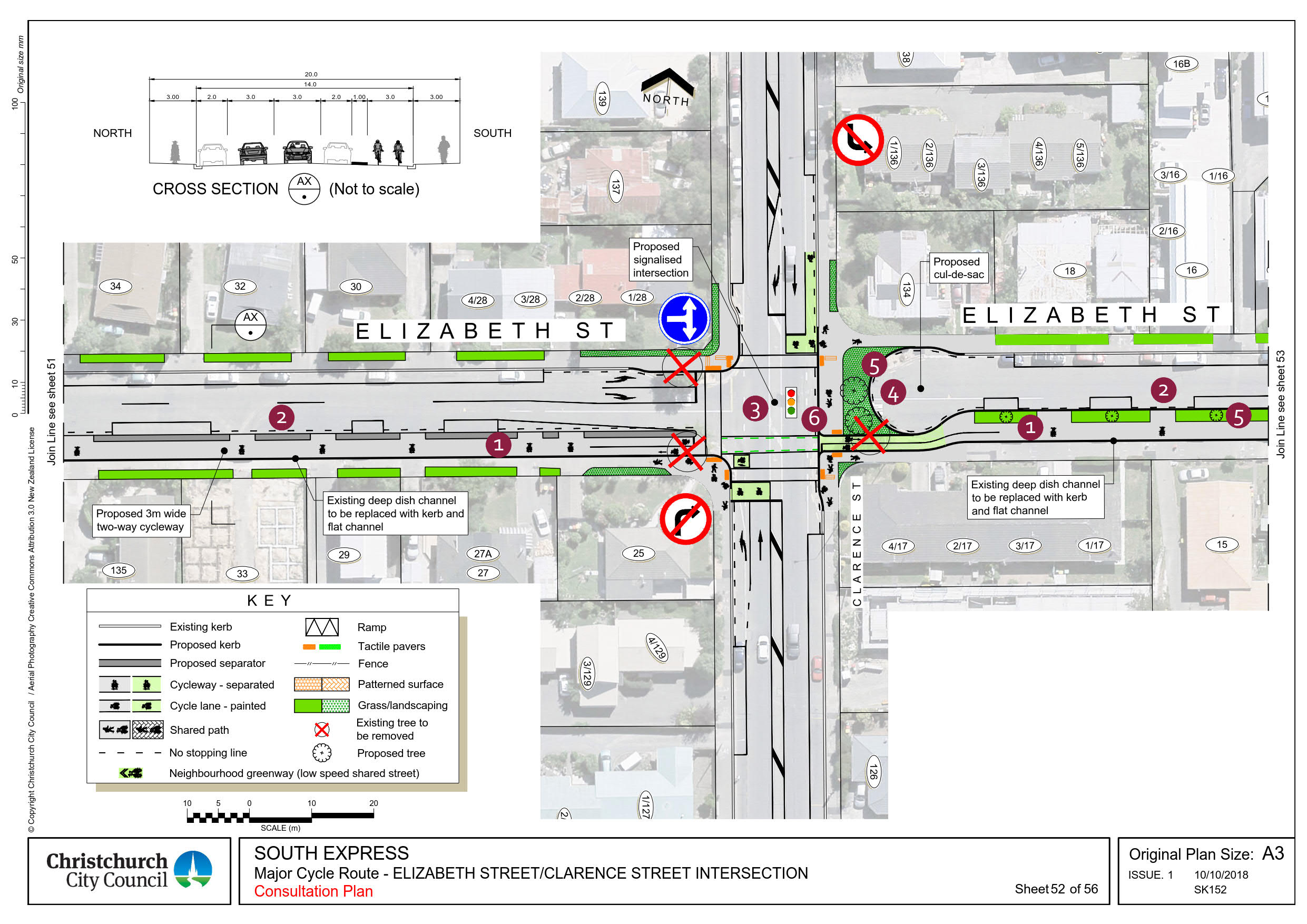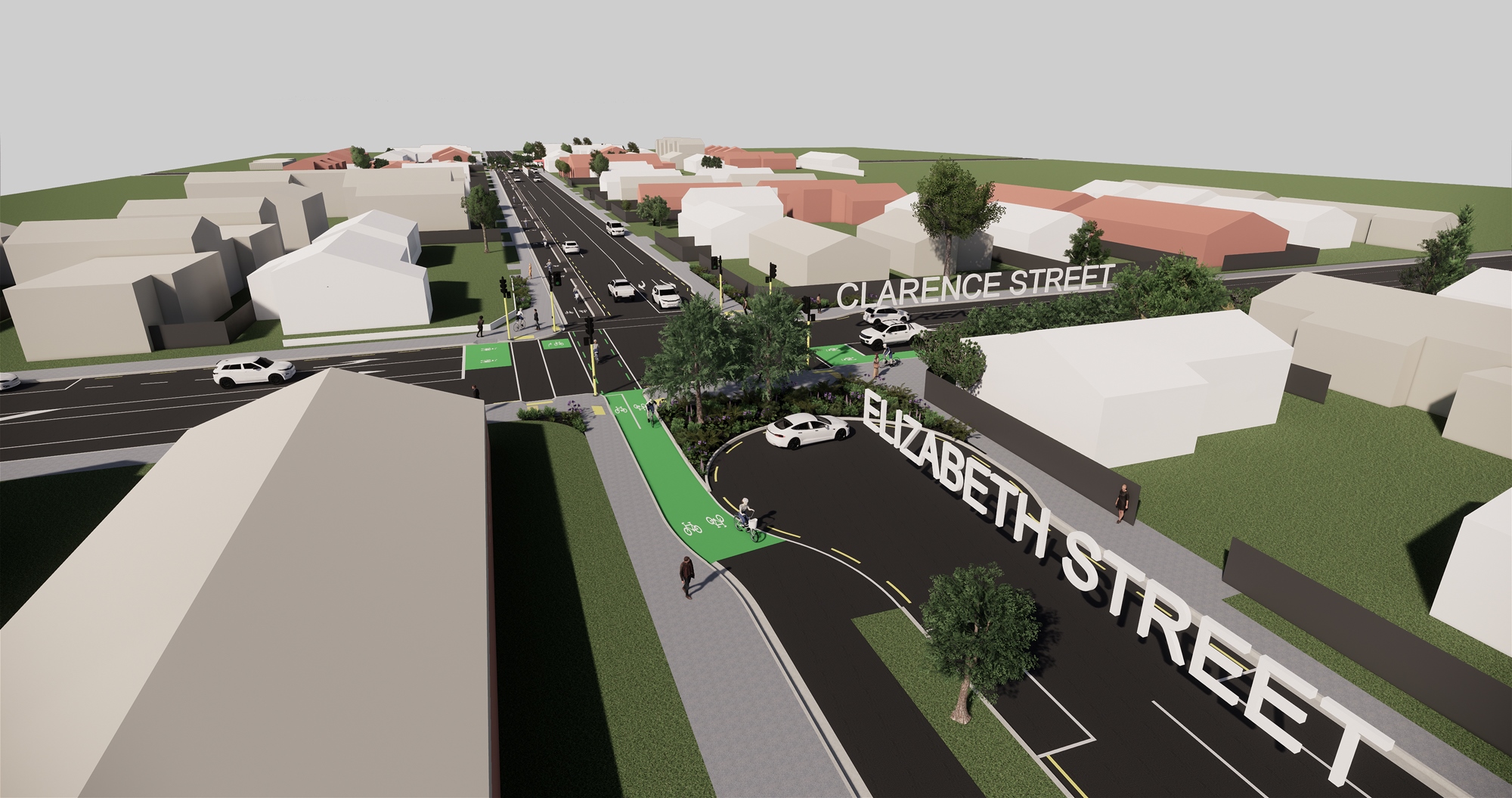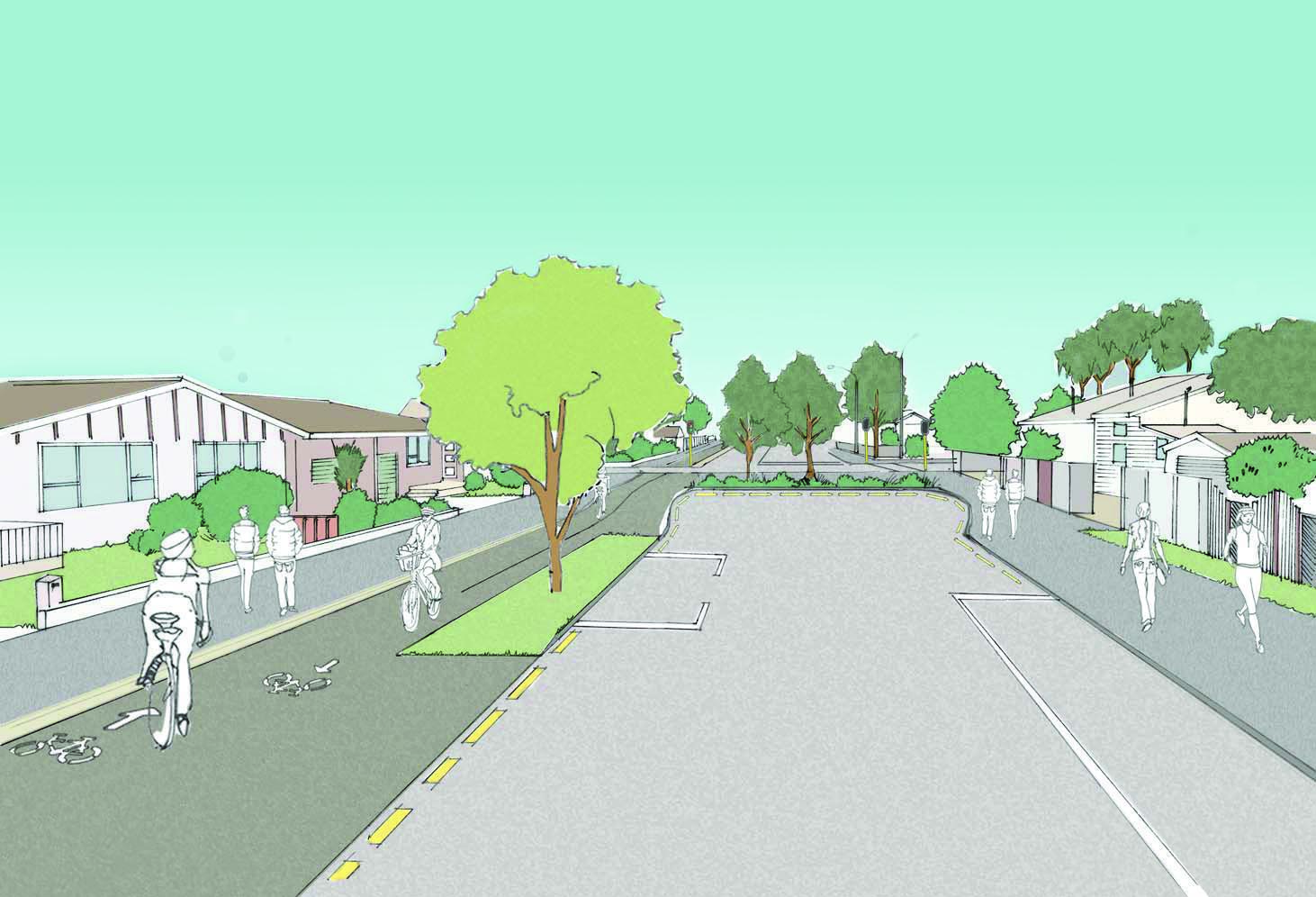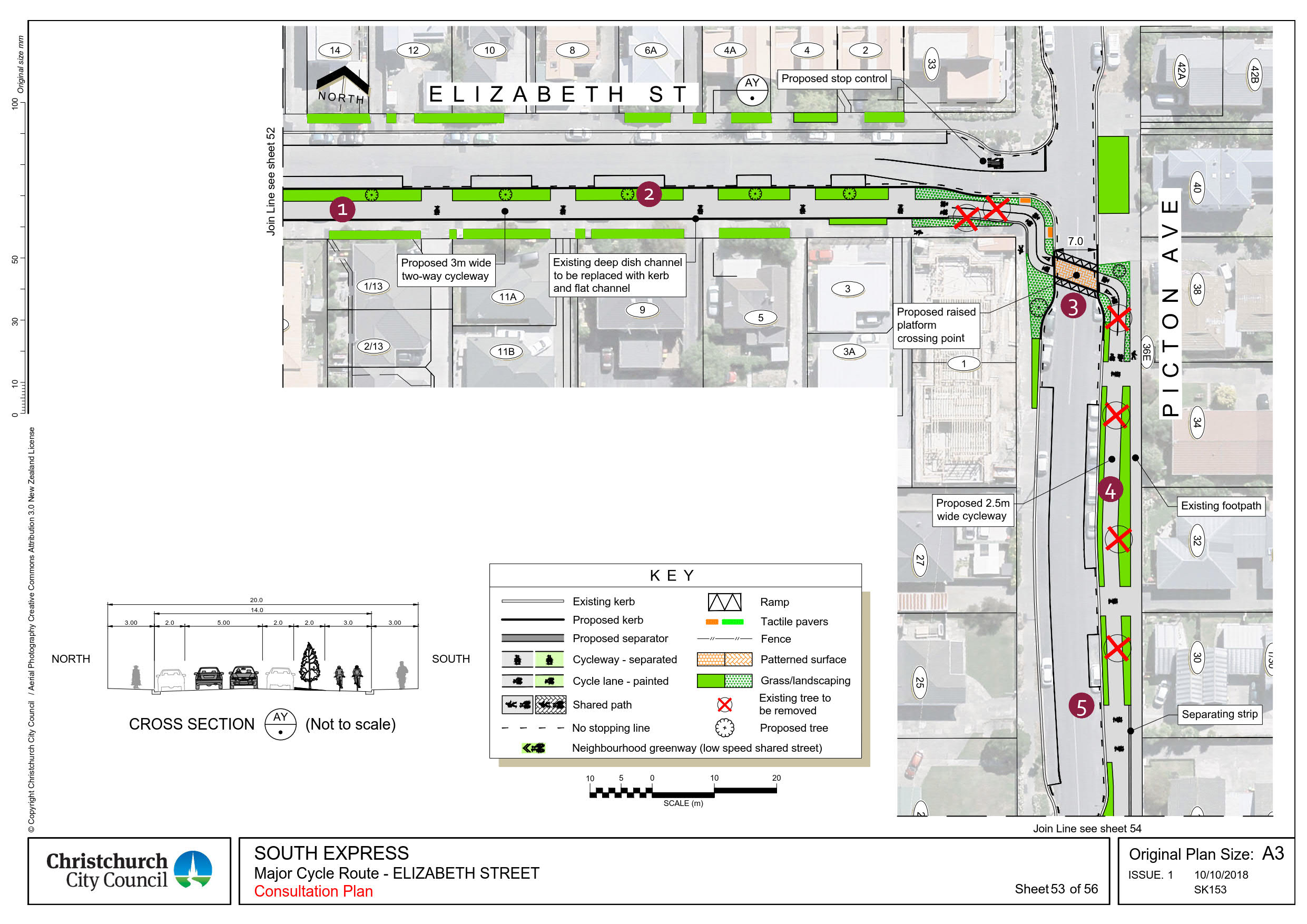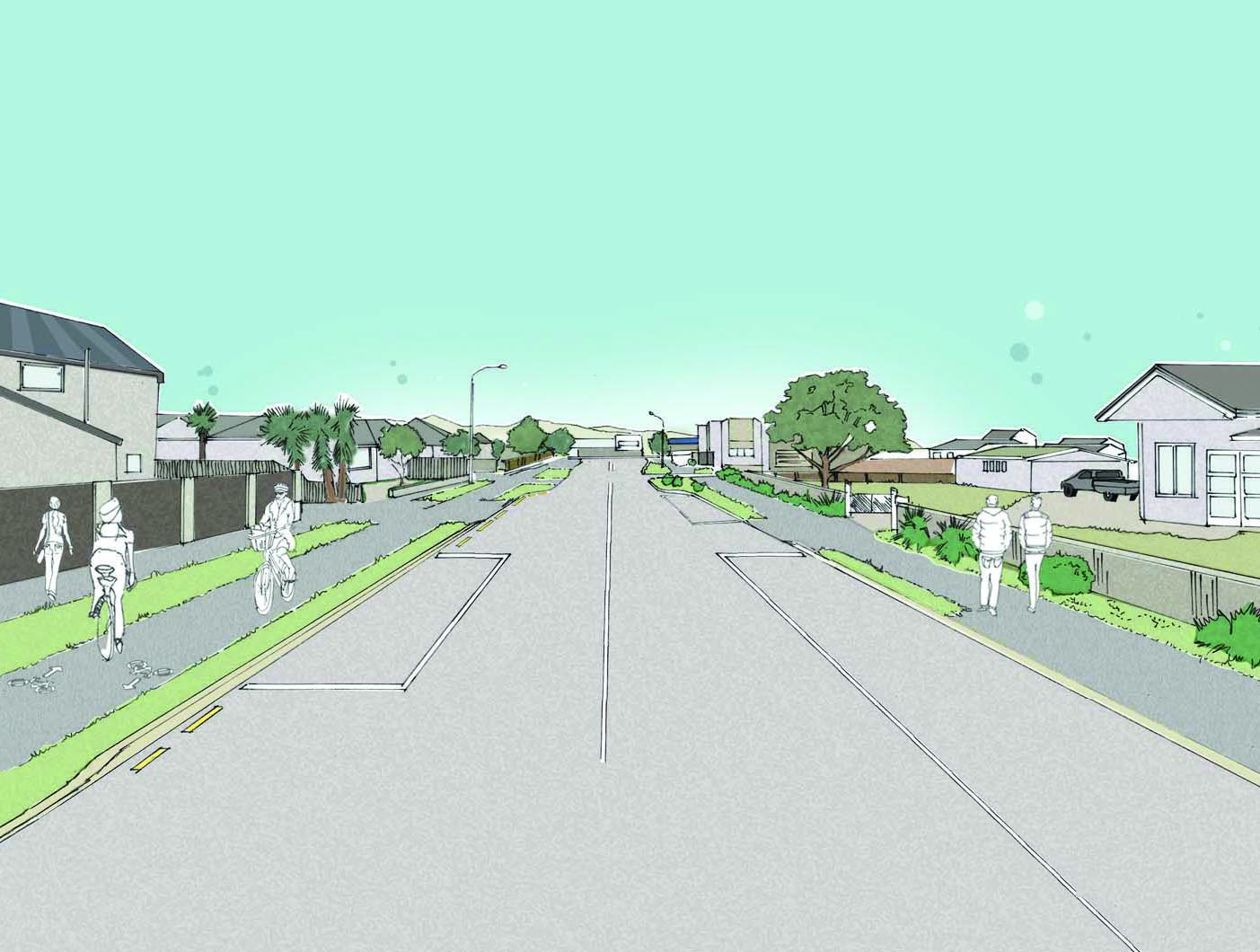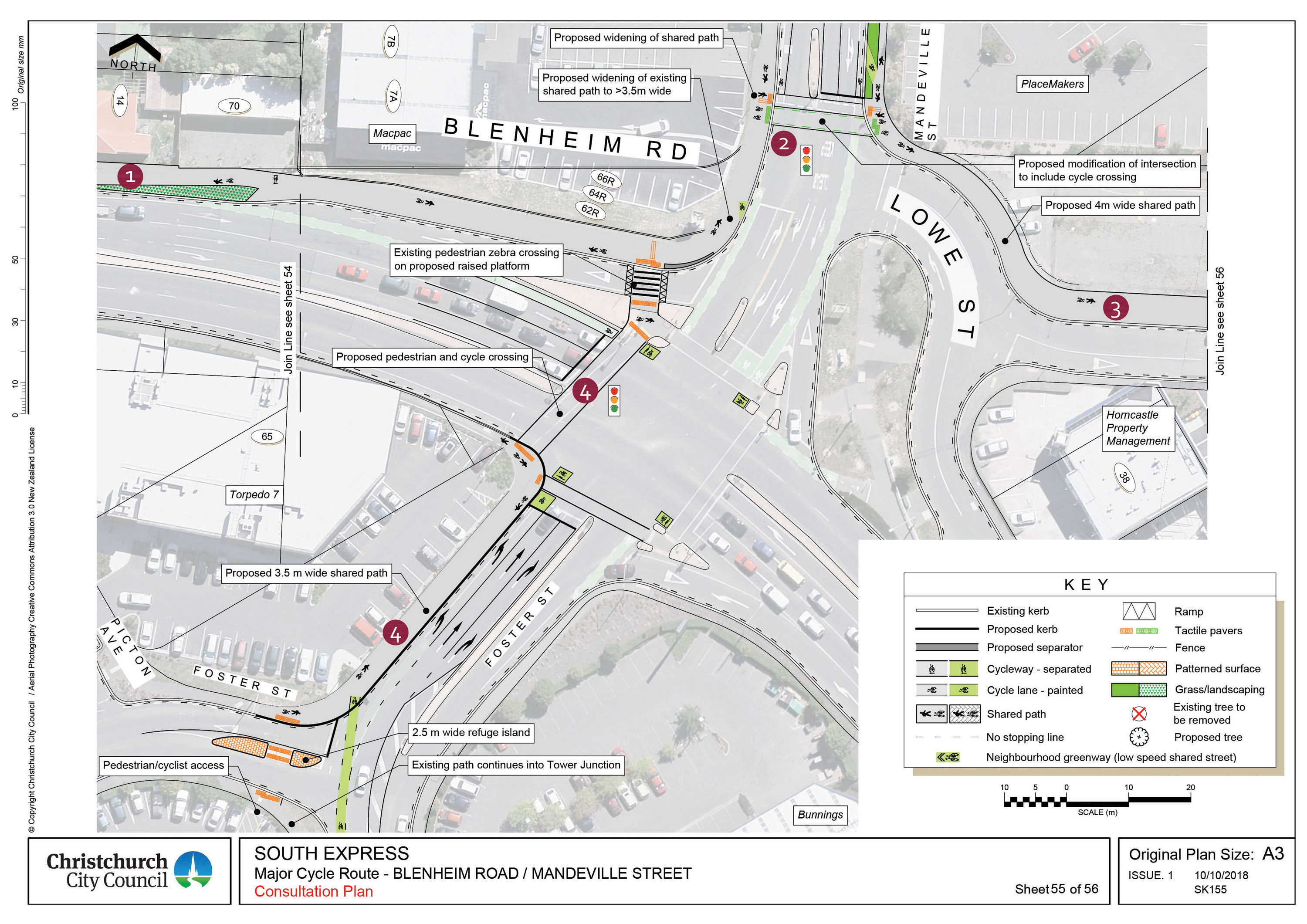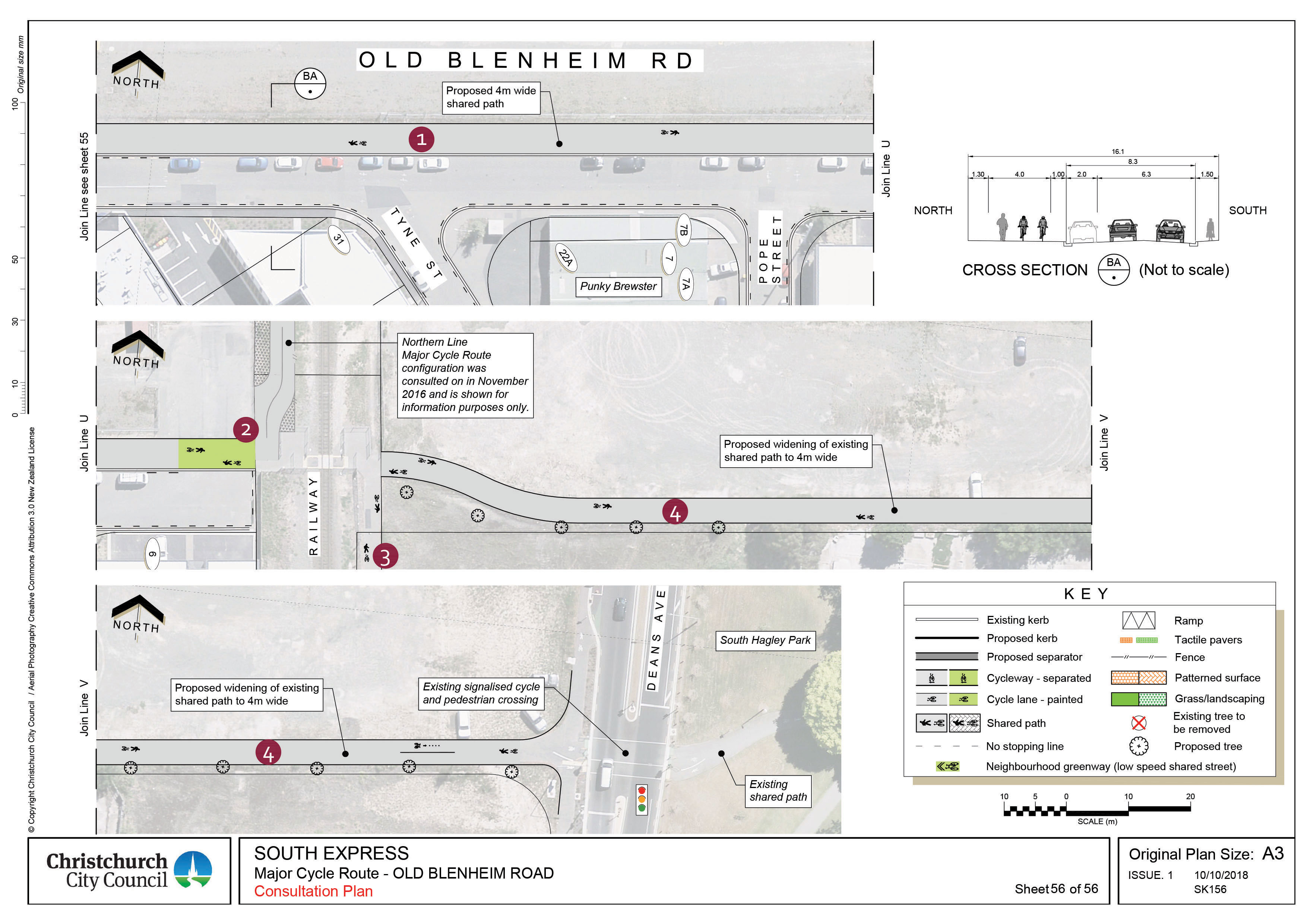In developing the South Express cycleway, we have developed a route that aims to balance safety, directness, access to destinations and impacts to stakeholders. We have looked at a number of different routes and types of cycleways. The route shown in this booklet is our preferred route and is considered to be the best option for providing a safe and comfortable link between Templeton and the city. The route provides excellent connections to several local schools in the area and aims to minimise impacts through major commercial and industrial areas.
Assessing the options
There are a number of factors that determine the best route for a cycleway. To ensure that all of these factors are considered, we have developed a process to help identify a preferred option. This process is designed to provide a balance between the needs of people wanting to cycle and the impacts of a cycleway on businesses, residents and the road network. For the South Express cycleway, a number of route options were initially identified and assessed.
Criteria considered:
Safety first
For the cycleways to be effective and feel safe, the Major Cycle Routes must be built in a certain way. This means separating people on bikes from motor vehicles in some areas, and slowing vehicles and reducing volumes in others.
Generally, the preferred location for Major Cycle Routes is on quieter streets with fewer trucks. However, this can be difficult to achieve where the route gets close to busy urban destinations and / or needs to link through commercial areas.
Traffic network considerations
Building safe cycle routes is one way to make the transport network more resilient. Where the proposed cycle route significantly changes the road, we must assess the likely impact on the rest of the transport network. In some cases plans for the route have been amended to avoid causing significant traffic delays and congestion elsewhere.
Business impacts
We recognise that existing parking is very important, particularly for local shops which rely on passing custom. Where possible, we have retained existing restricted parking zones and with some exceptions, have proposed alternative restricted on-street parking close by.
We aren’t making any changes to parking in the business park.
Residential impacts
We are aware of the need to balance different travel needs including parking, and we have carefully considered options to keep as much parking as possible.
However, when planning safe, direct cycleways using limited available space, there will be times when vehicle parking does not take priority.
What about tree removal?
In some areas we will need to remove trees to make room for the cycleway, and to improve safety by increasing visibility of the cycleway as people come out of their driveways or travel along the road. Trees to be removed will be replaced in suitable locations nearby.
Connecting with the central city and other Major Cycle Routes
South Express cycleway will have a direct connection with the Nor’West Arc in Riccarton and the Northern Line at the eastern end of the route. It continues through South Hagley Park to connect to the central city cycleways along Tuam and St Asaph streets.


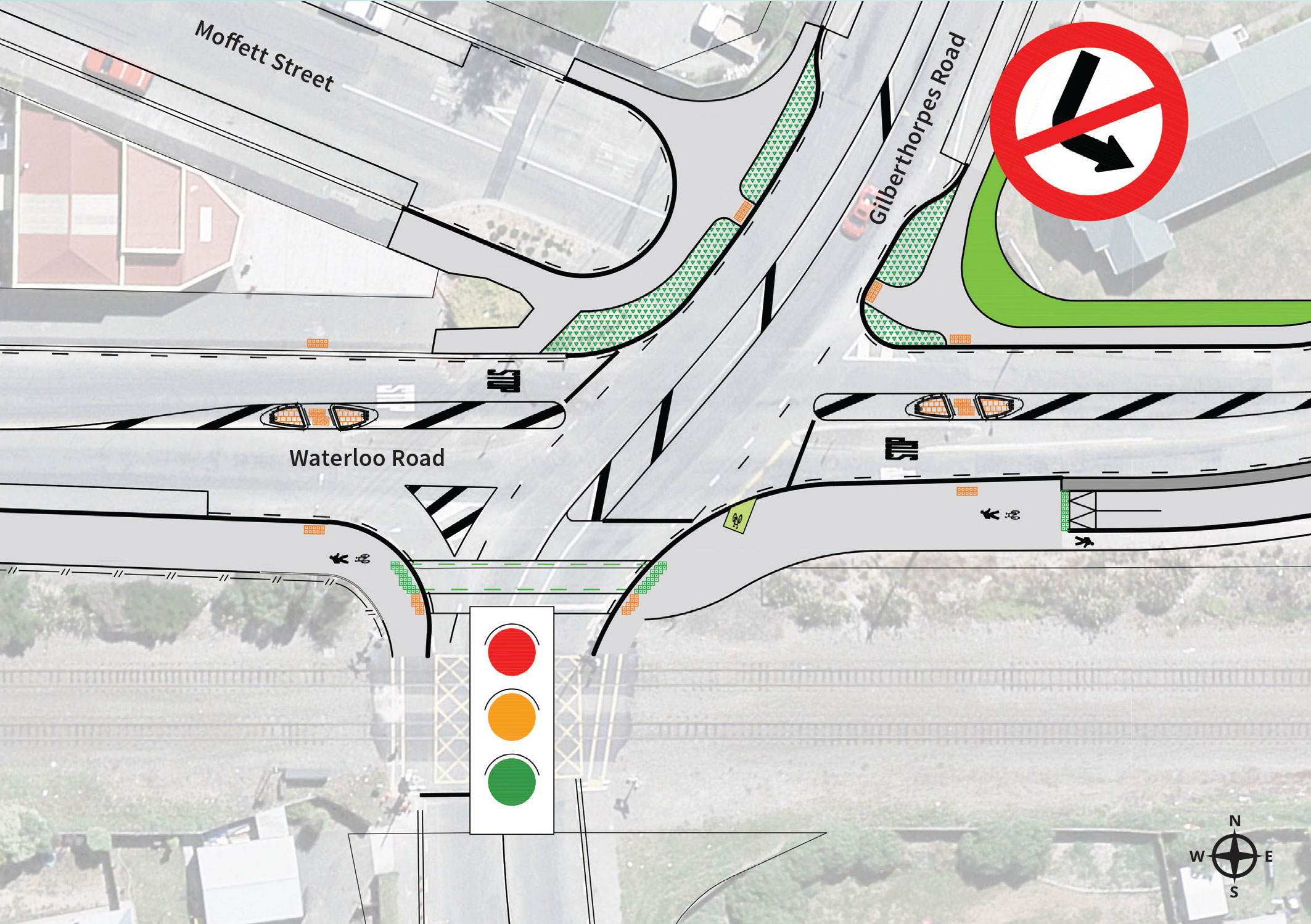
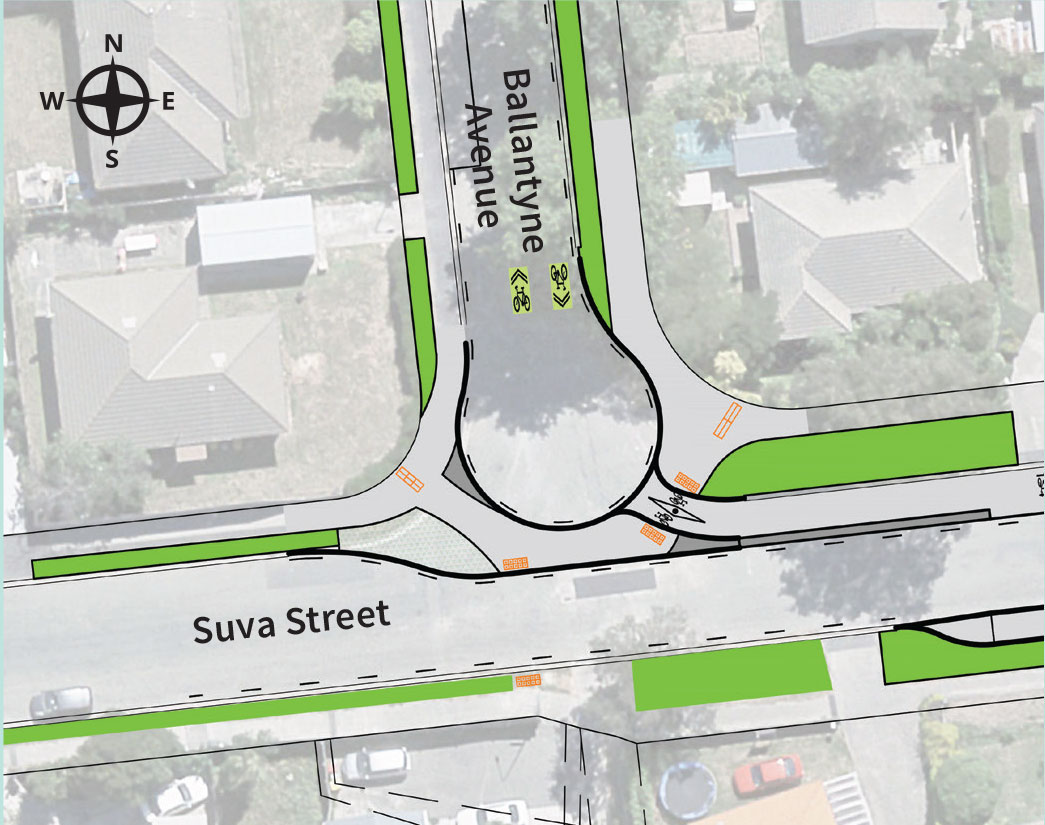
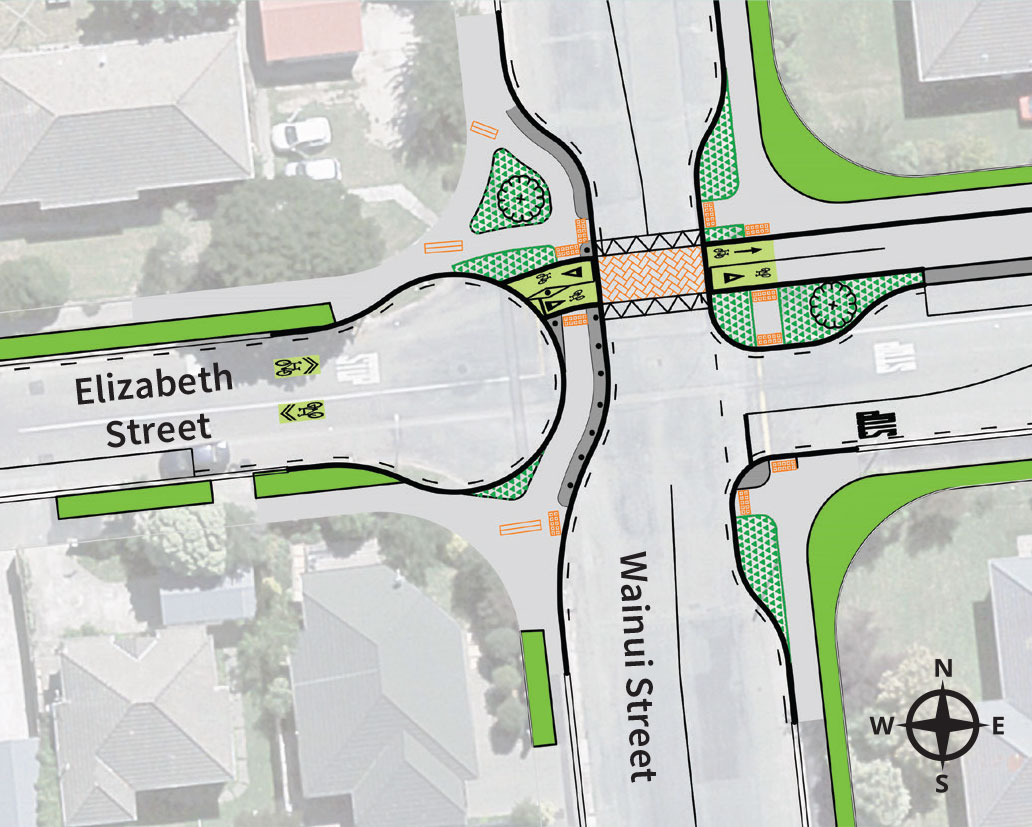
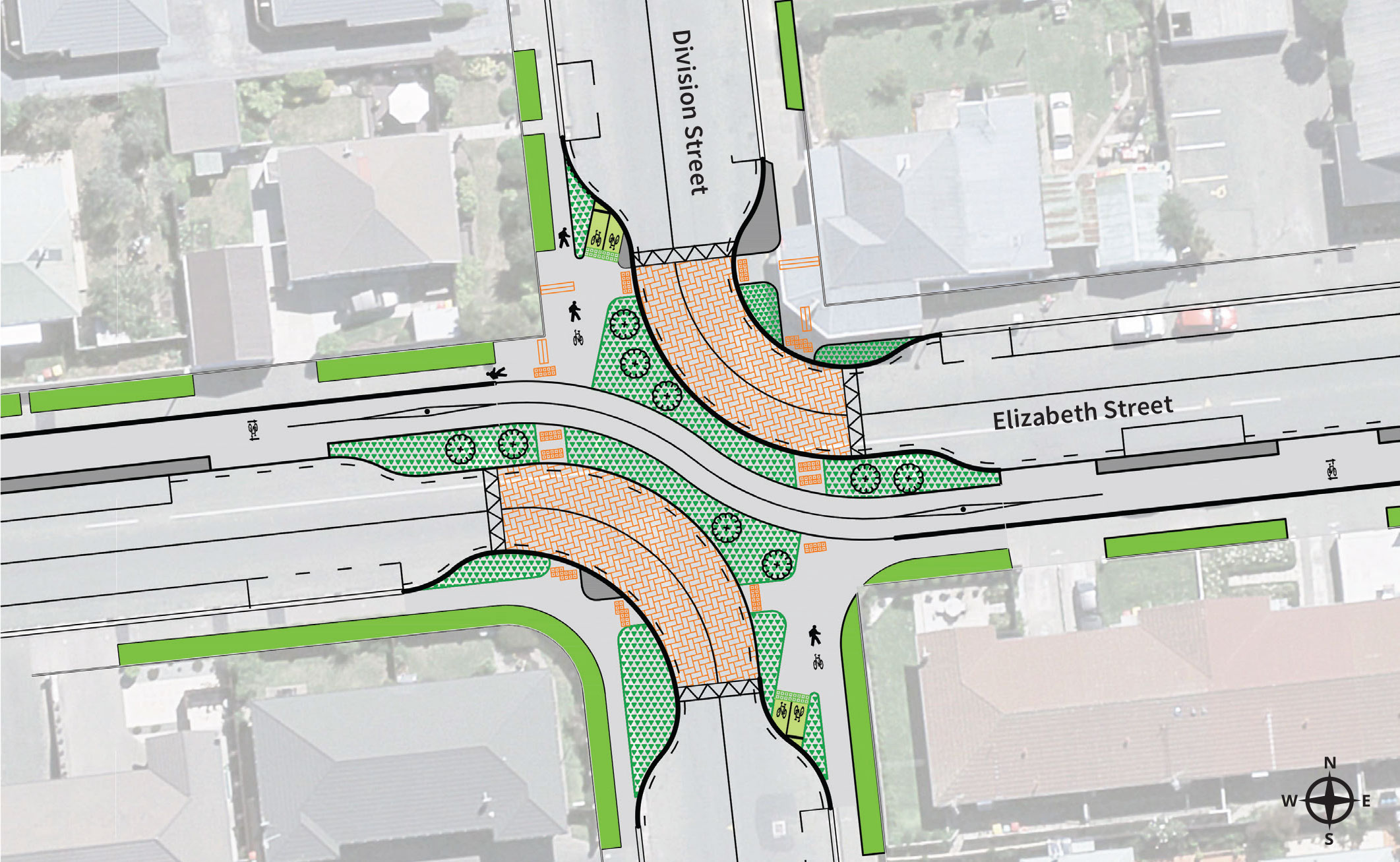
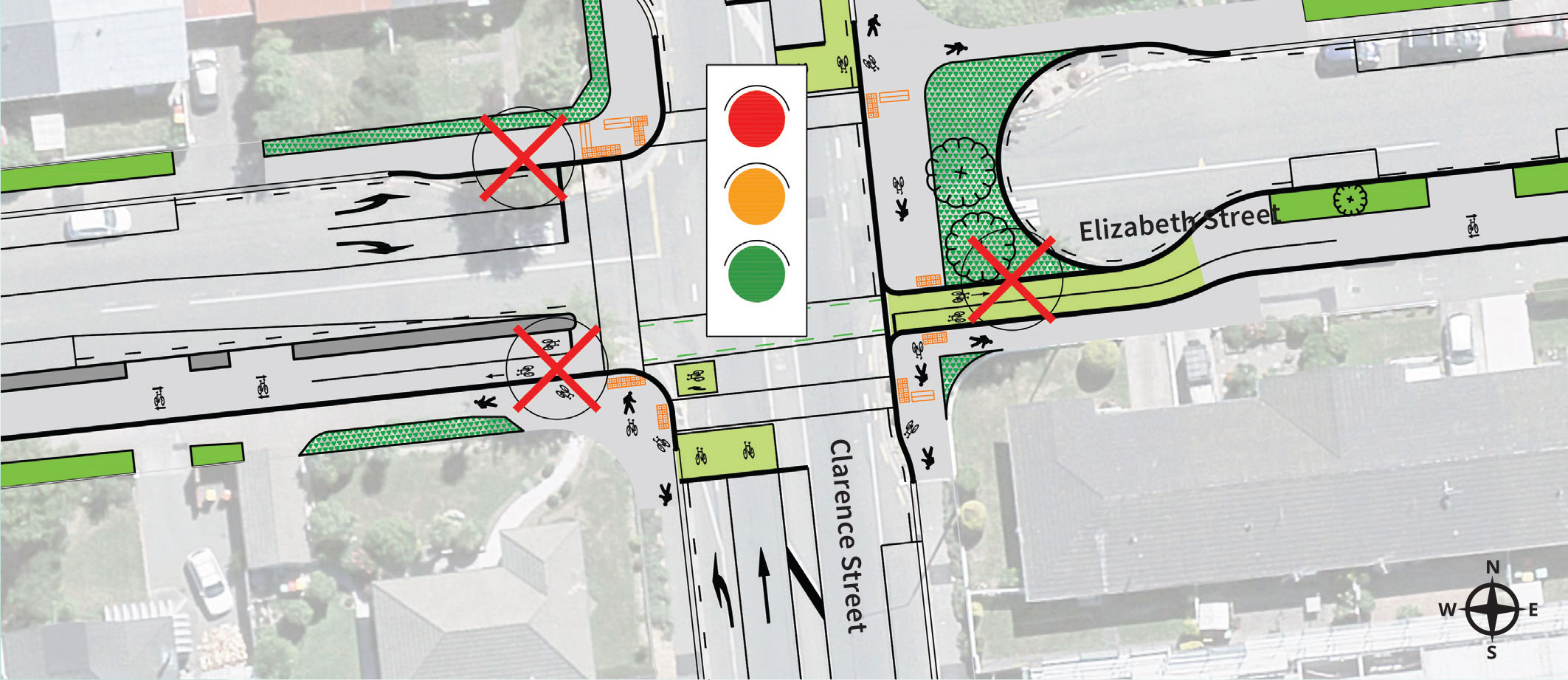

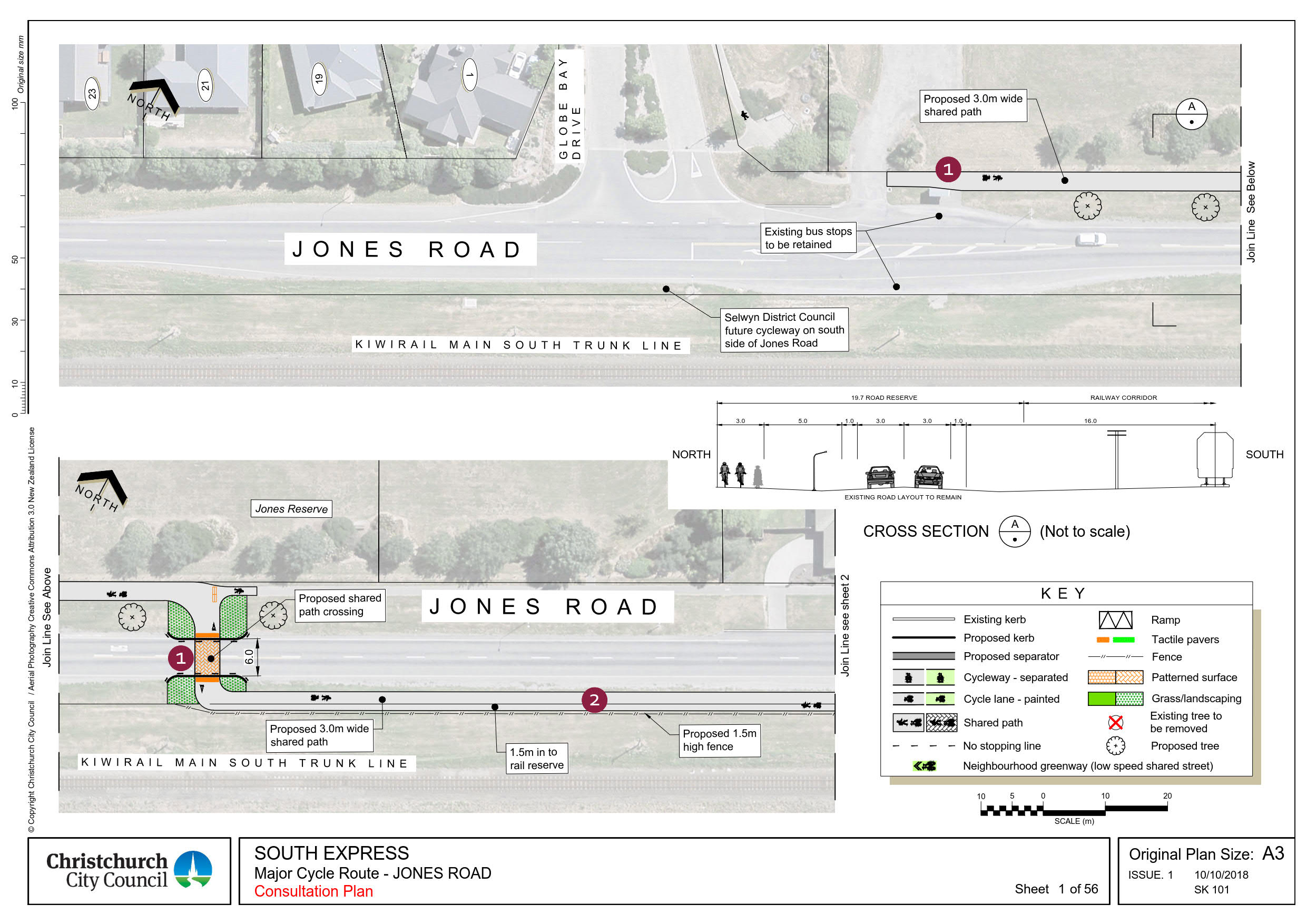
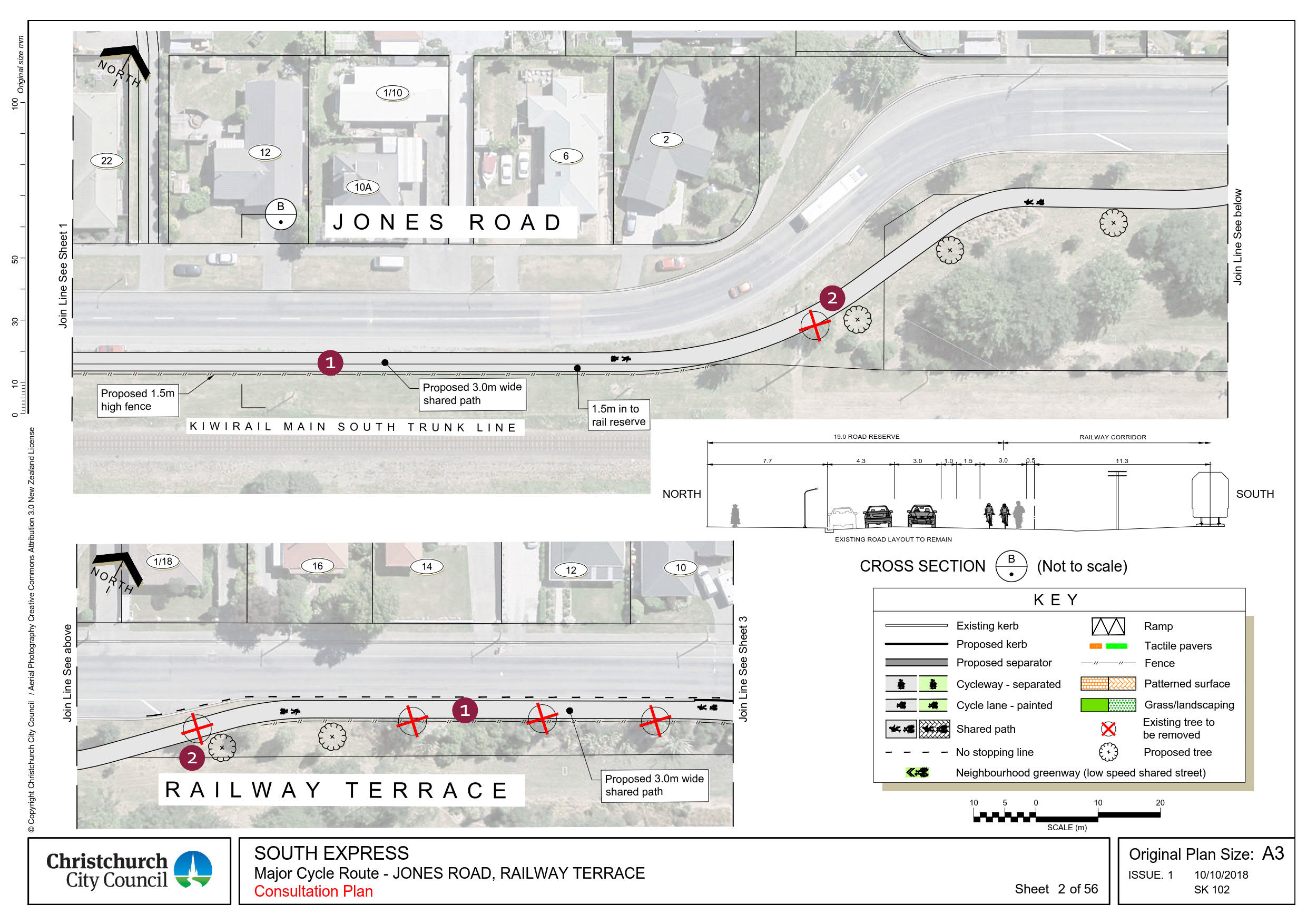

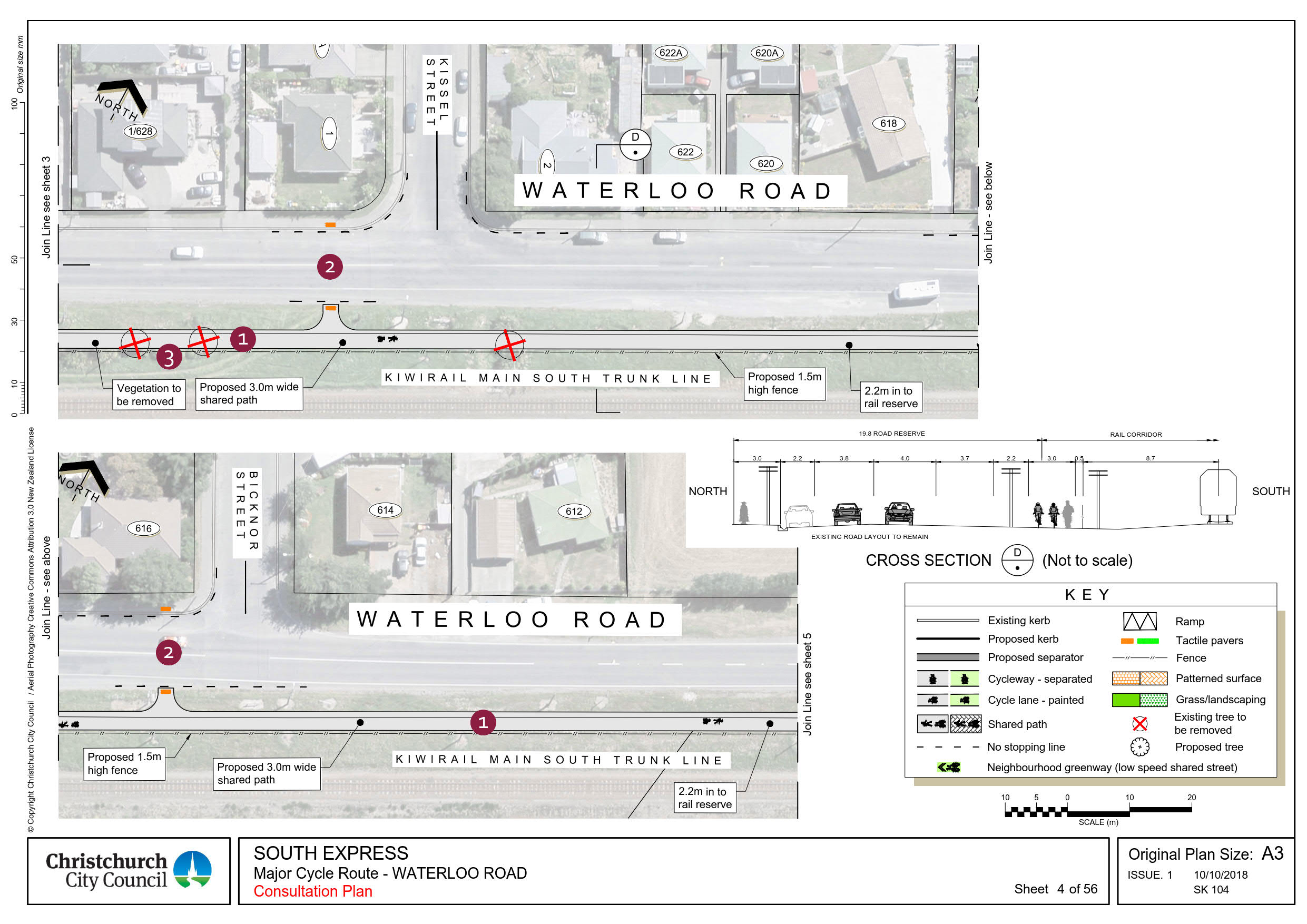
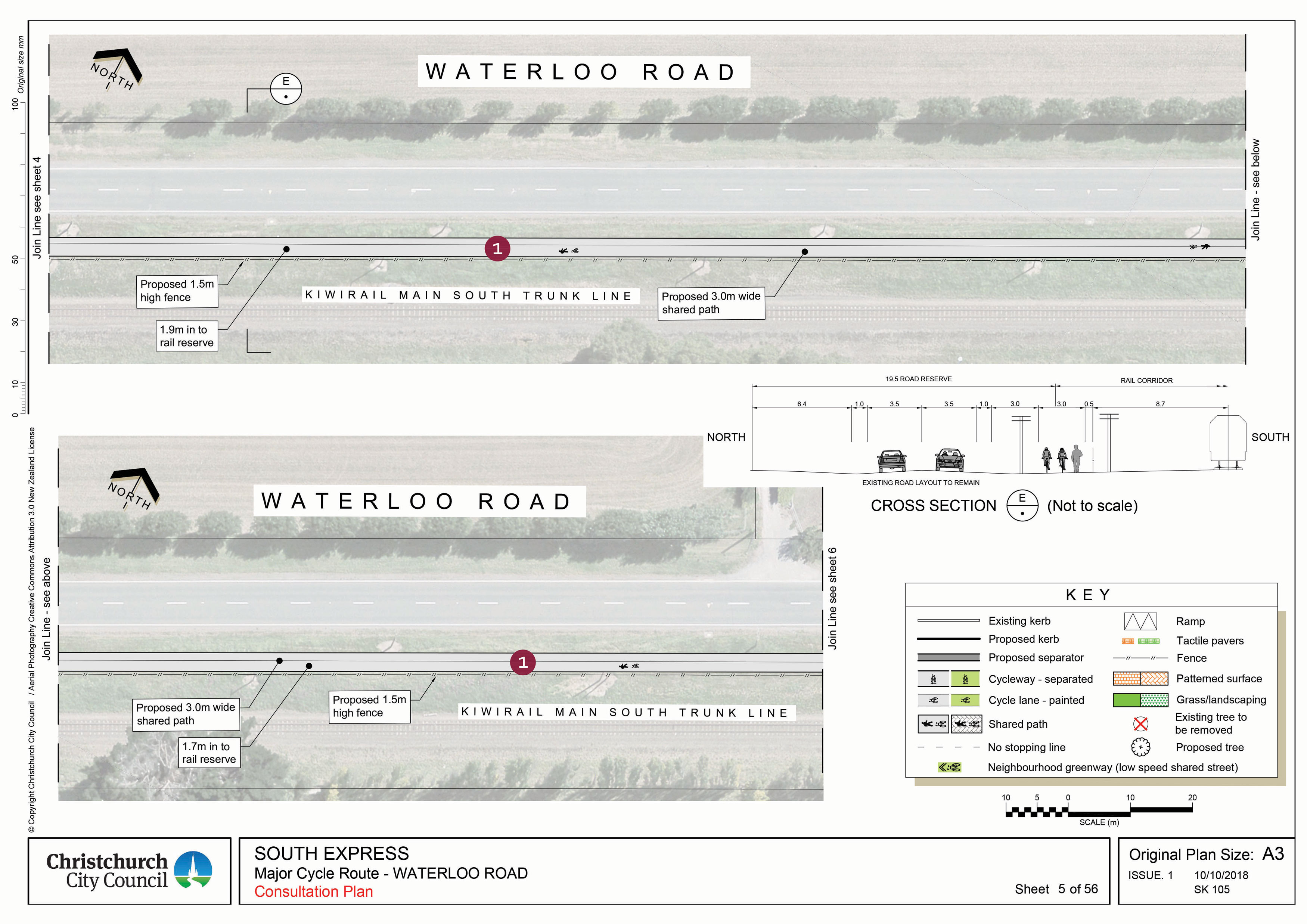

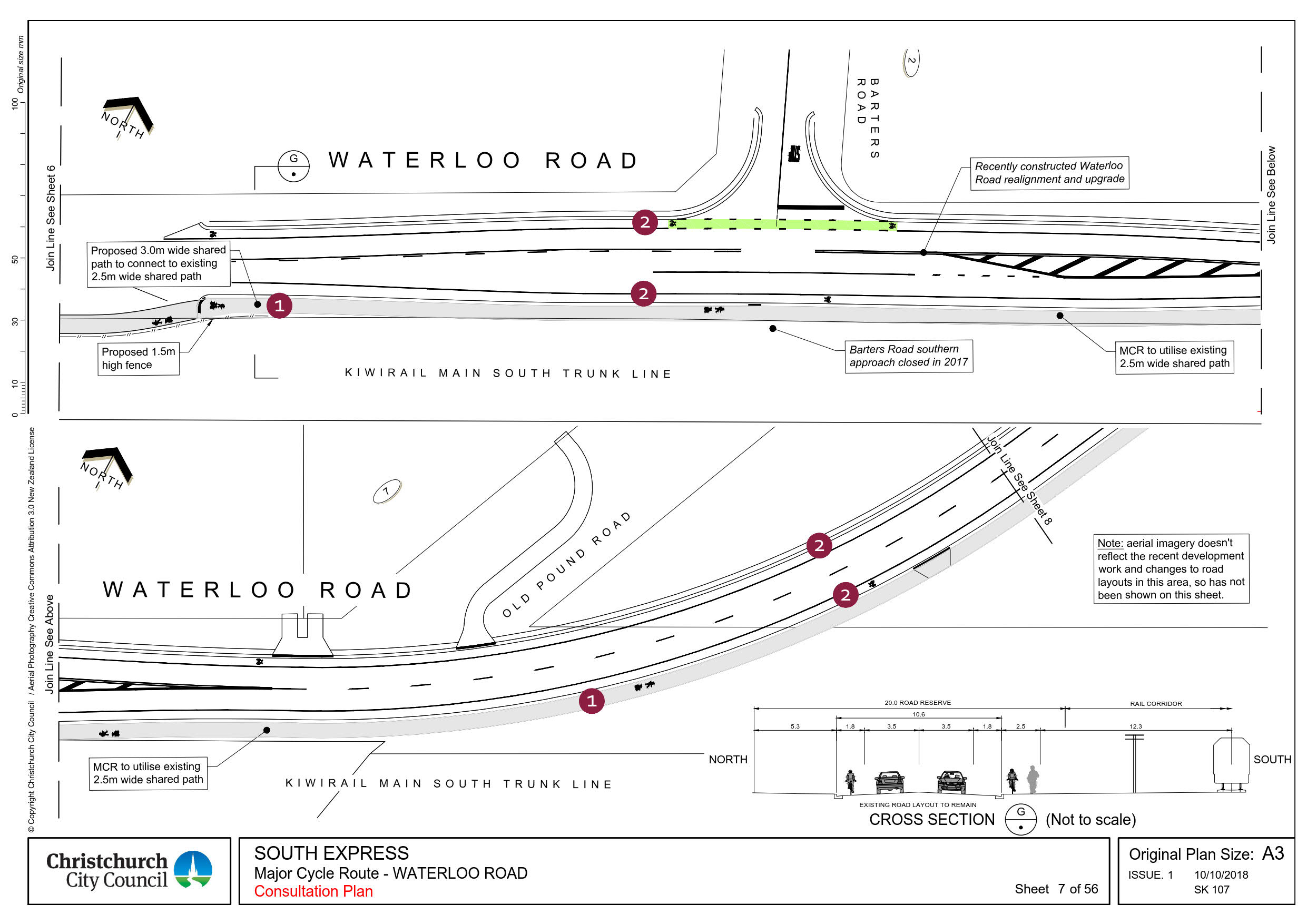
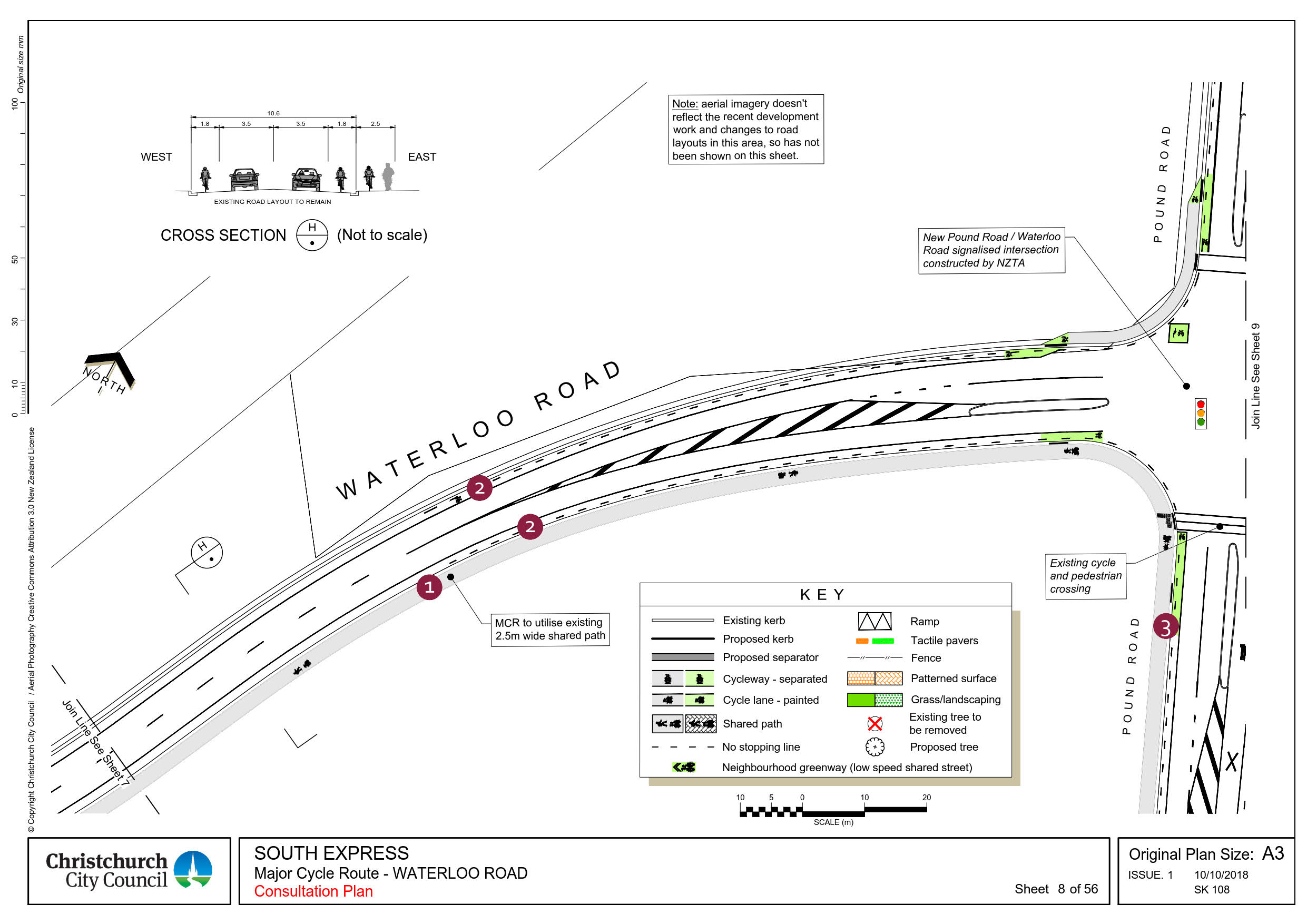
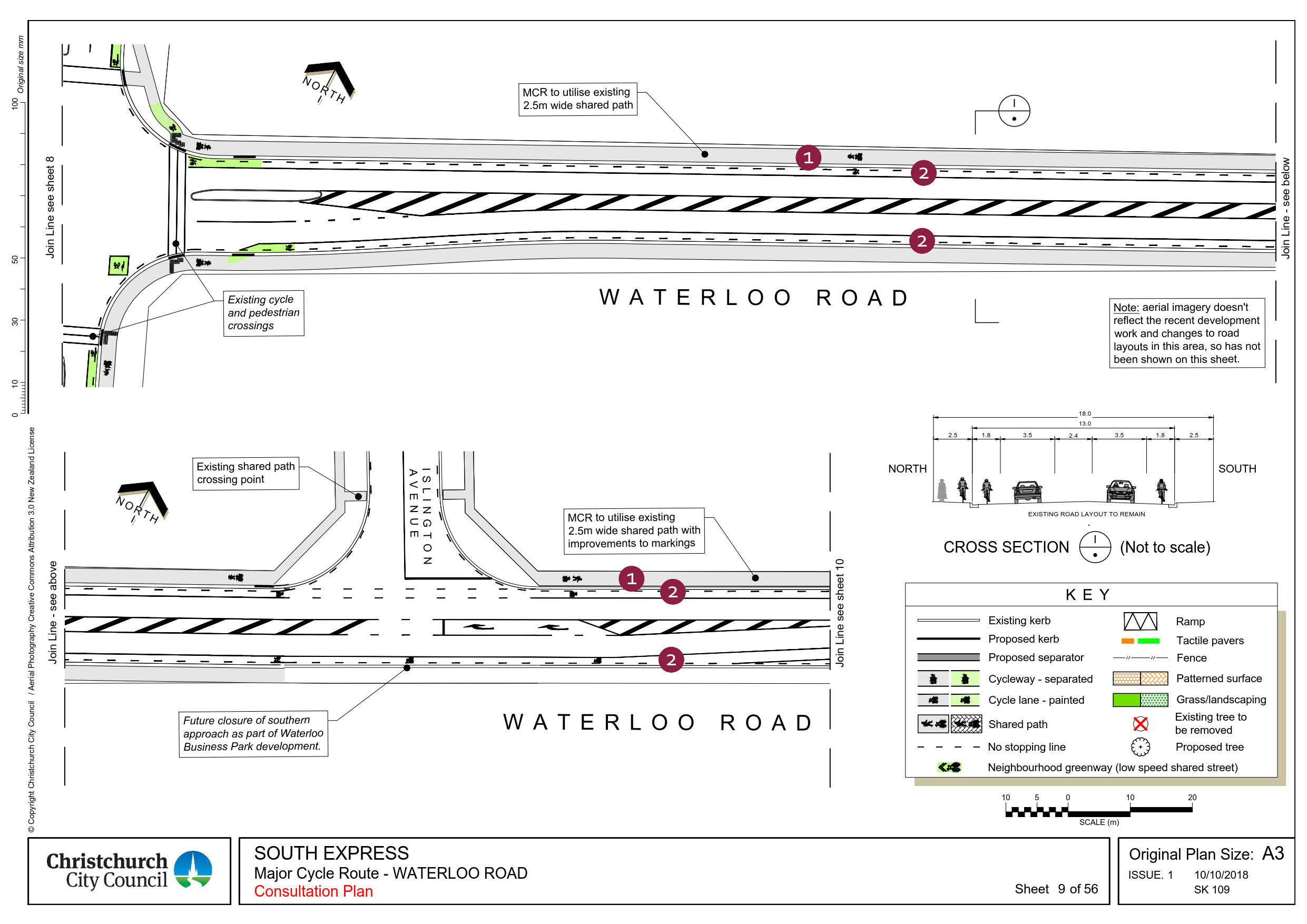
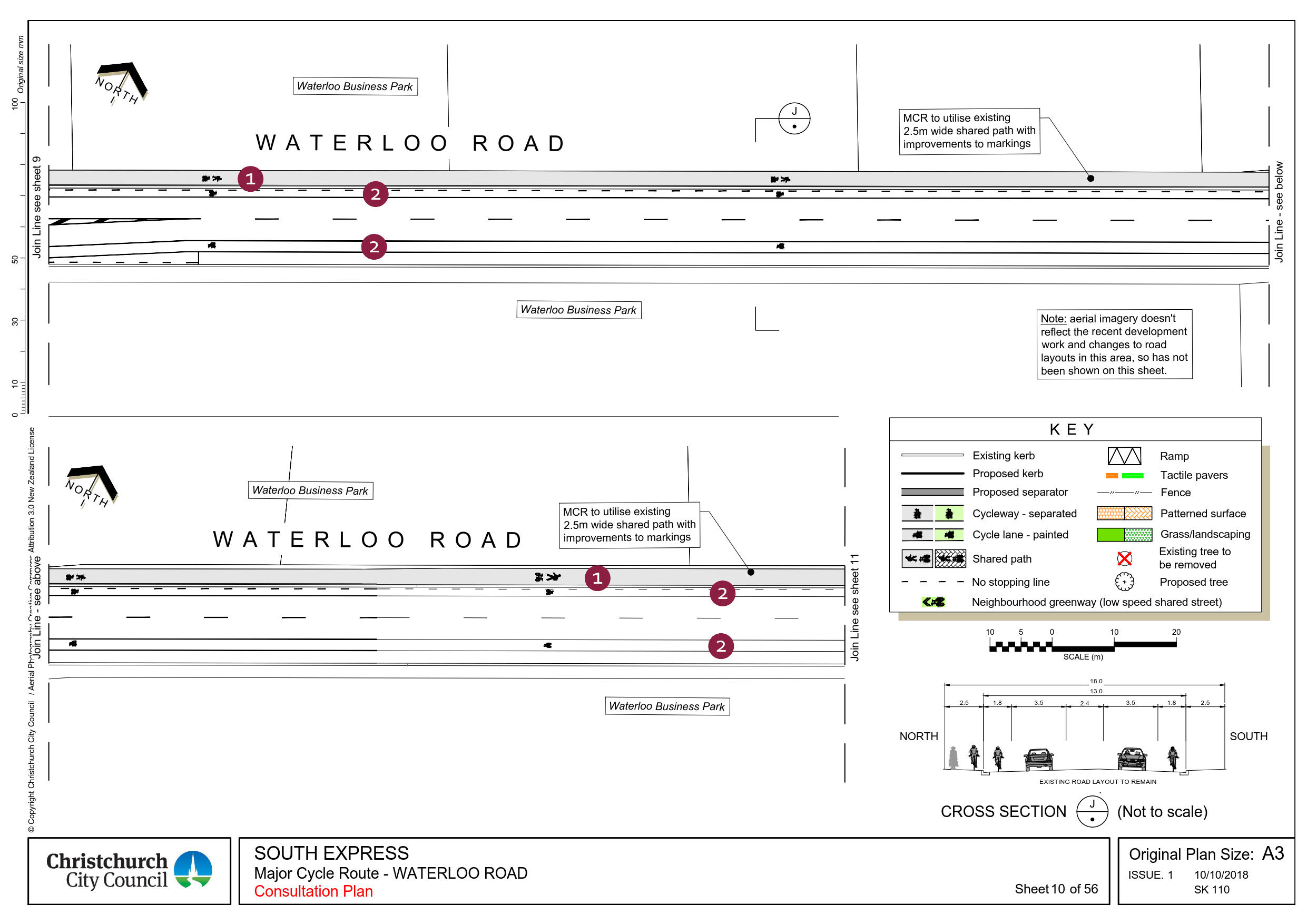

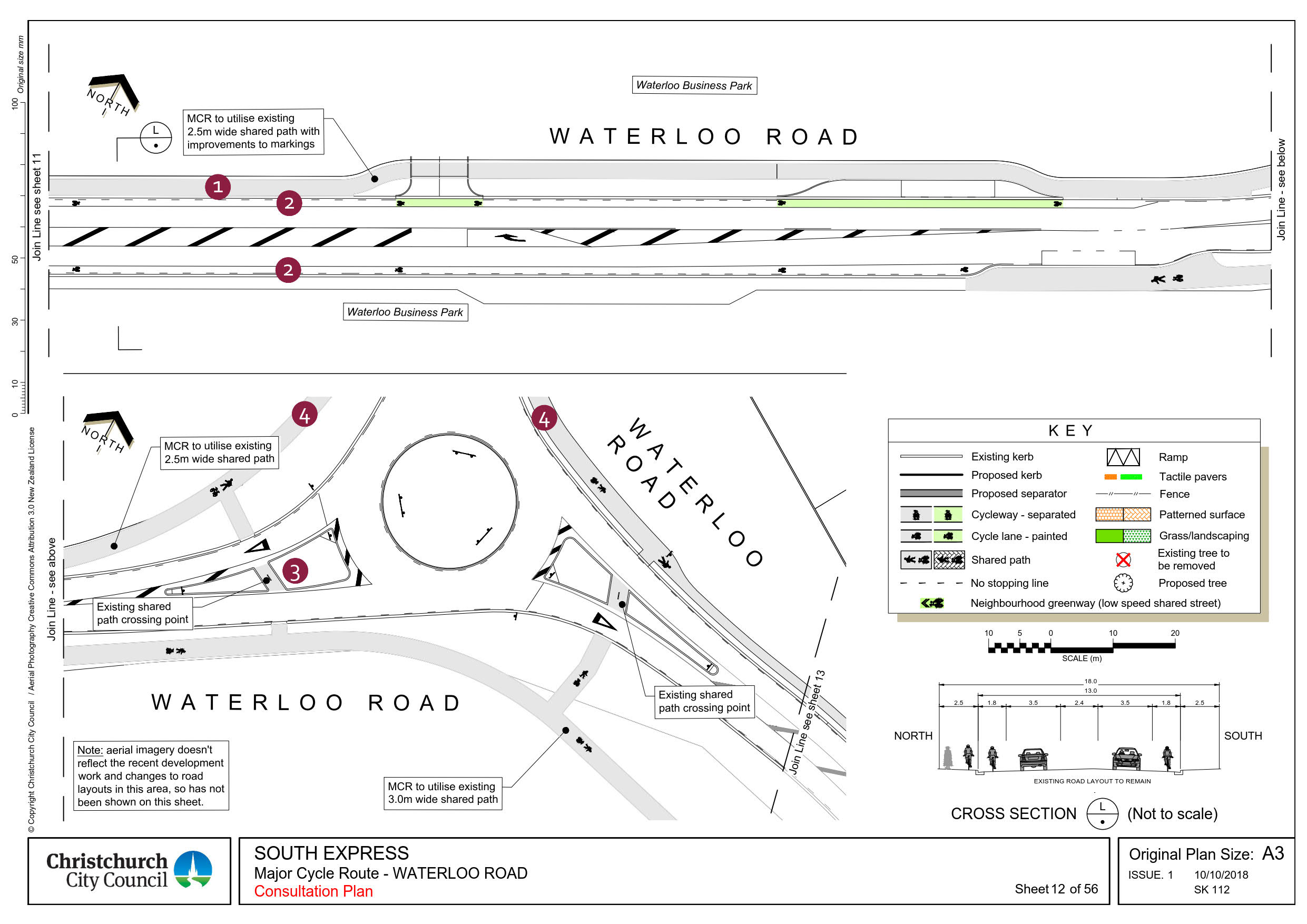
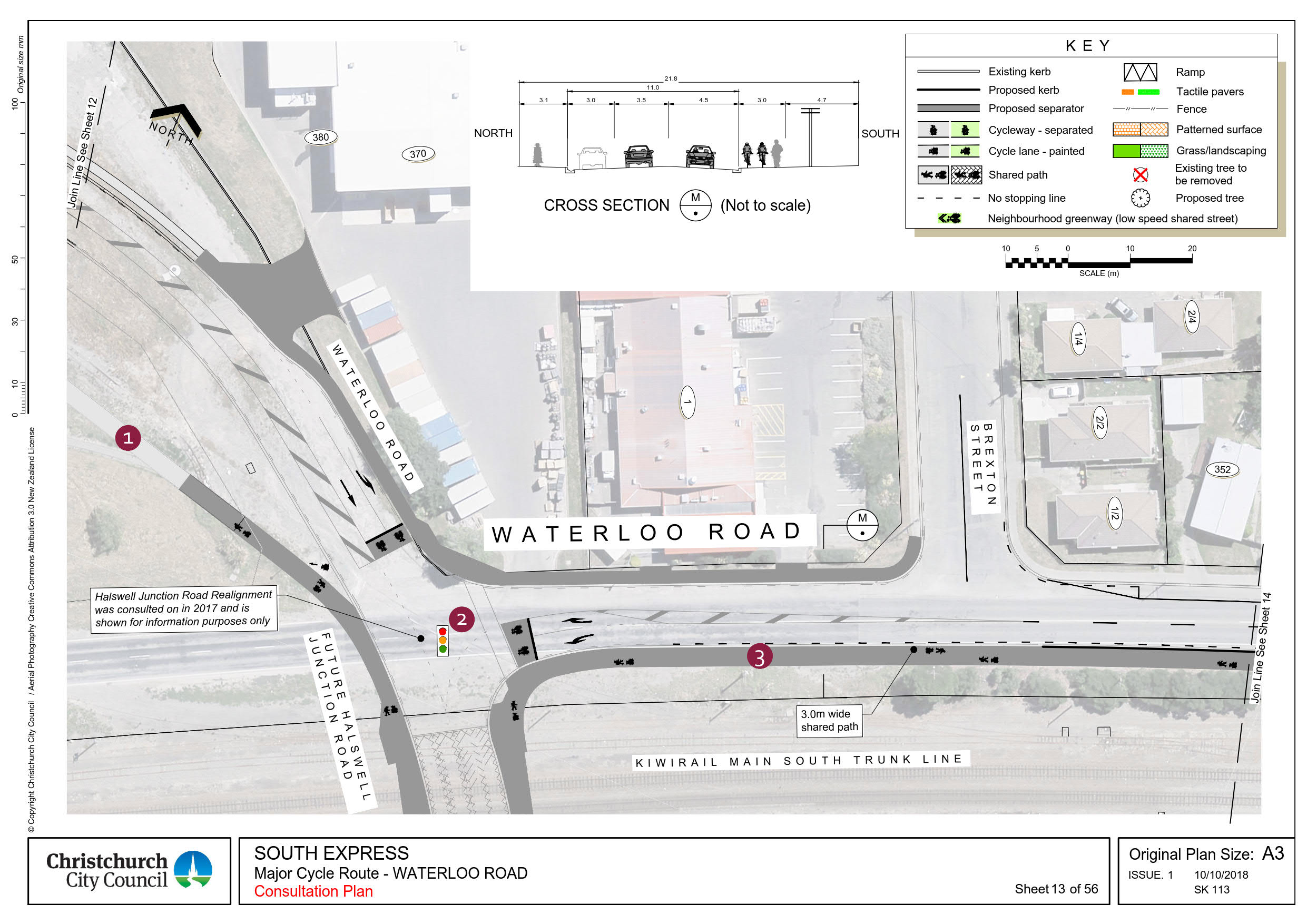
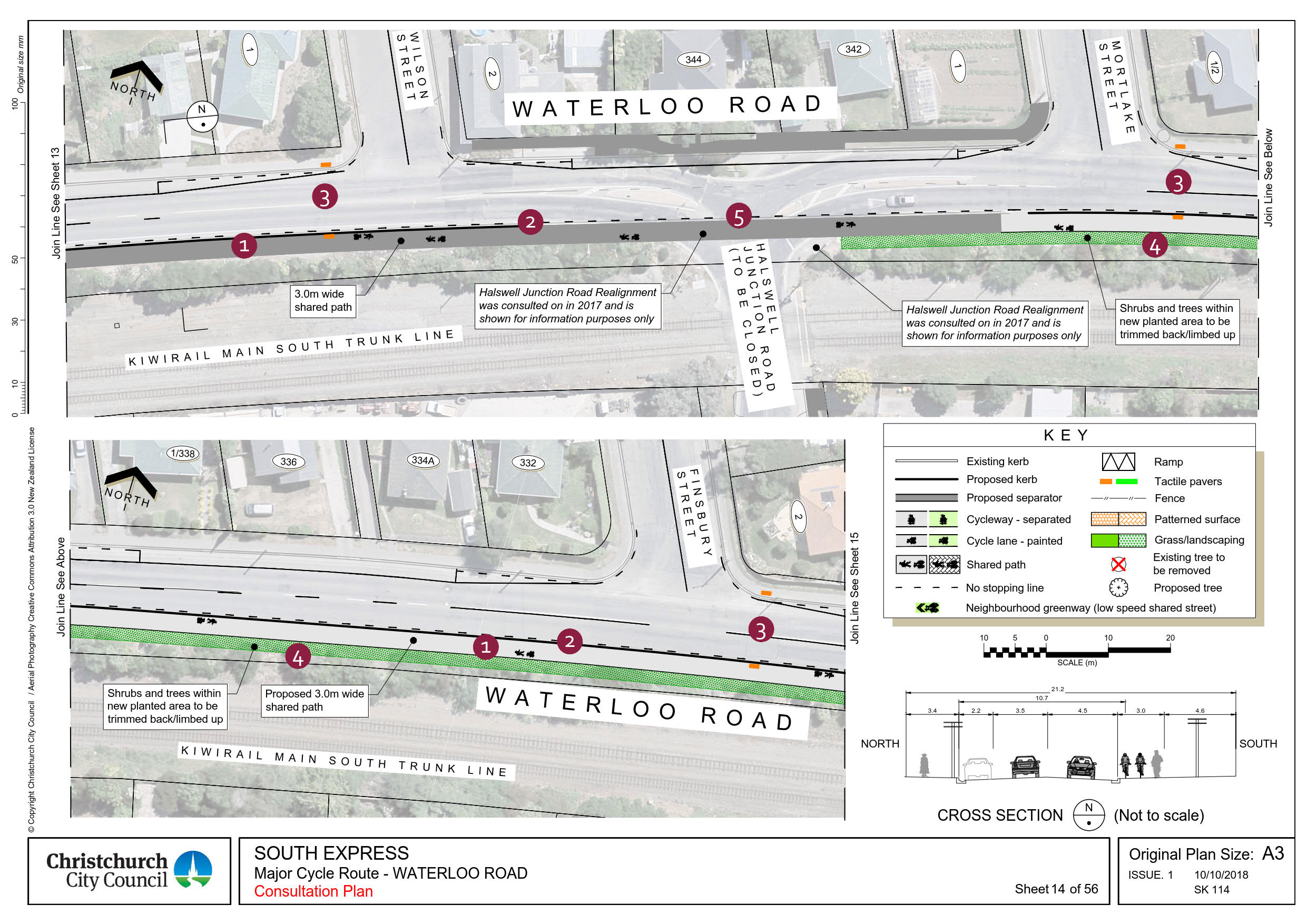
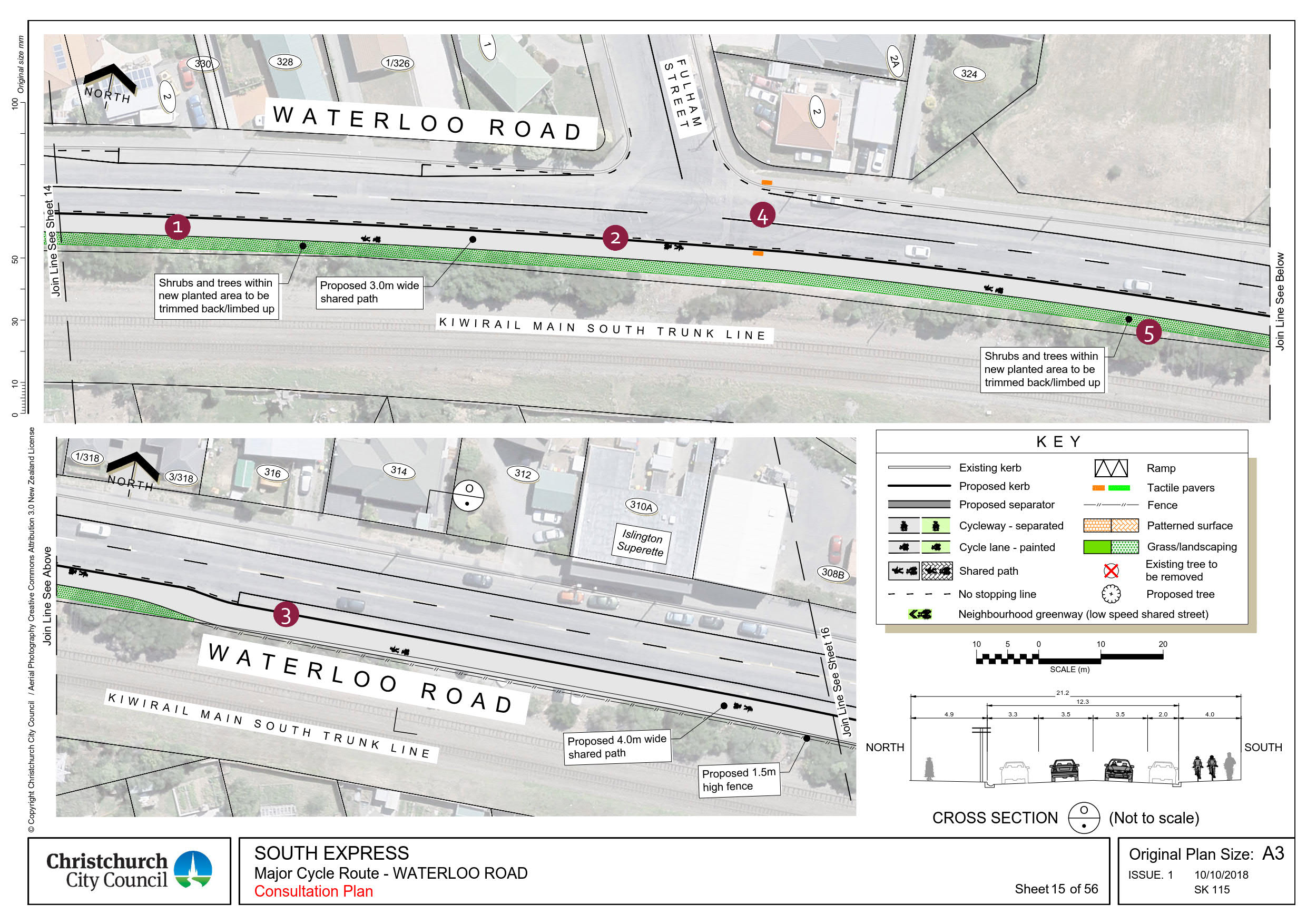



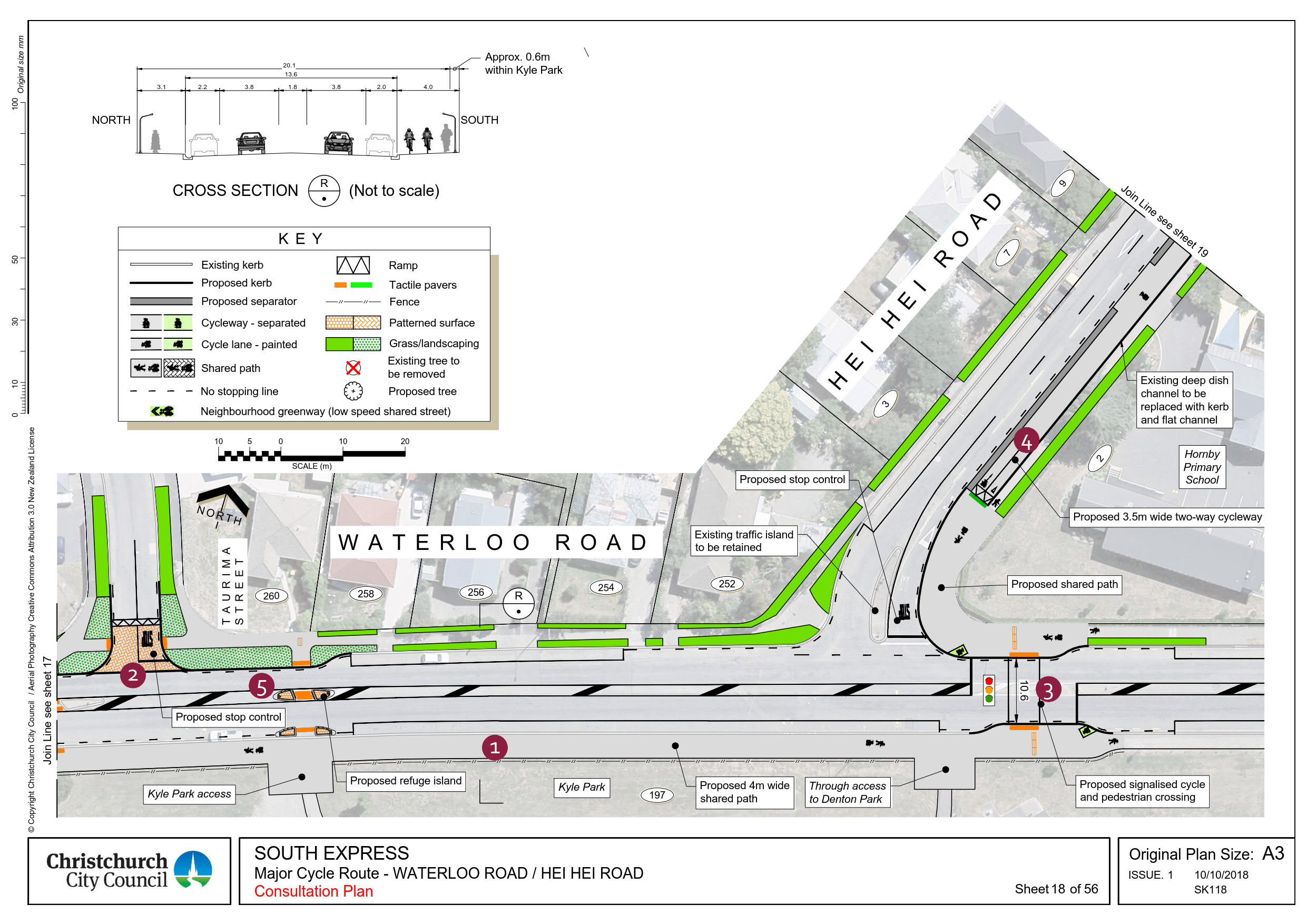
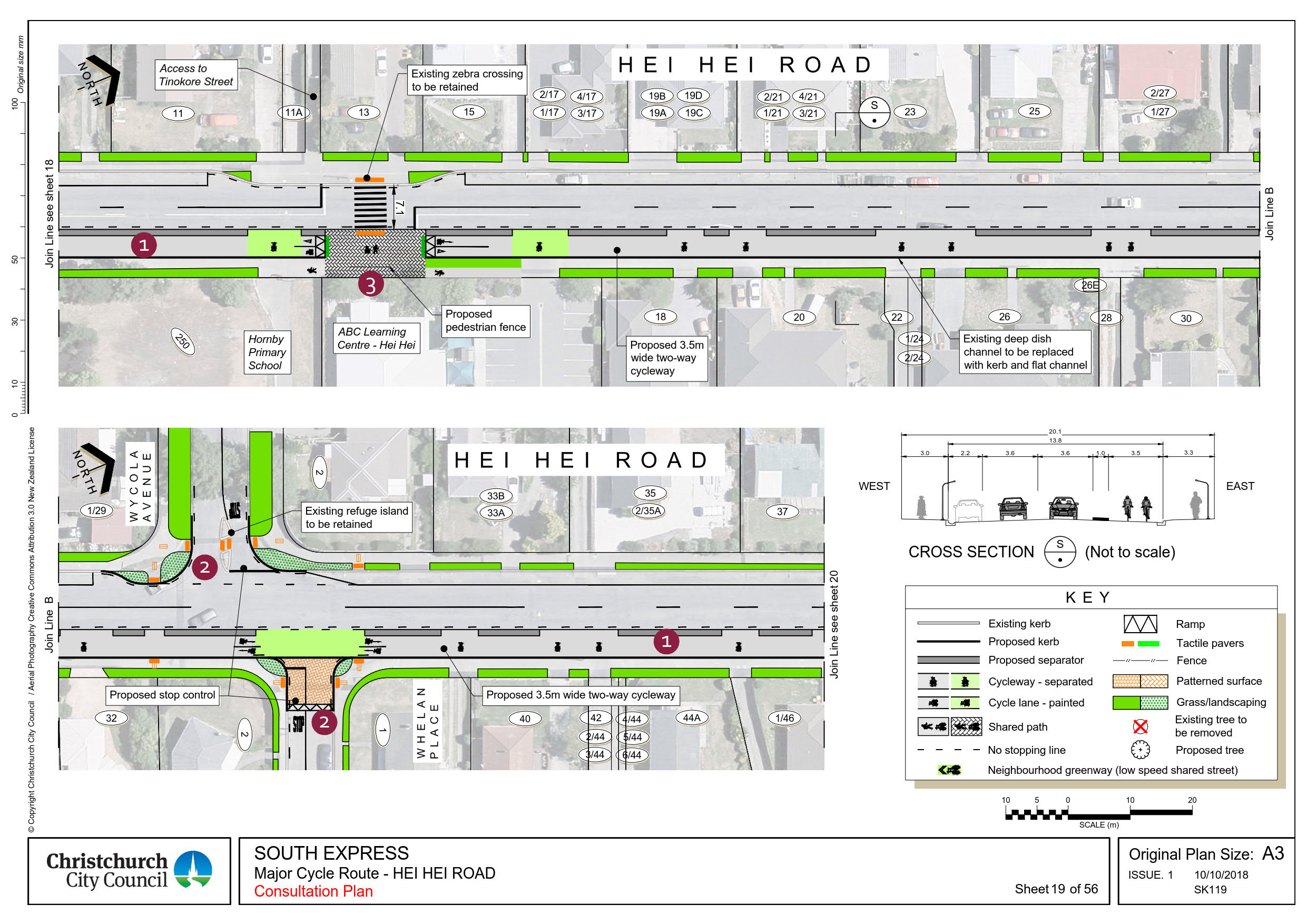
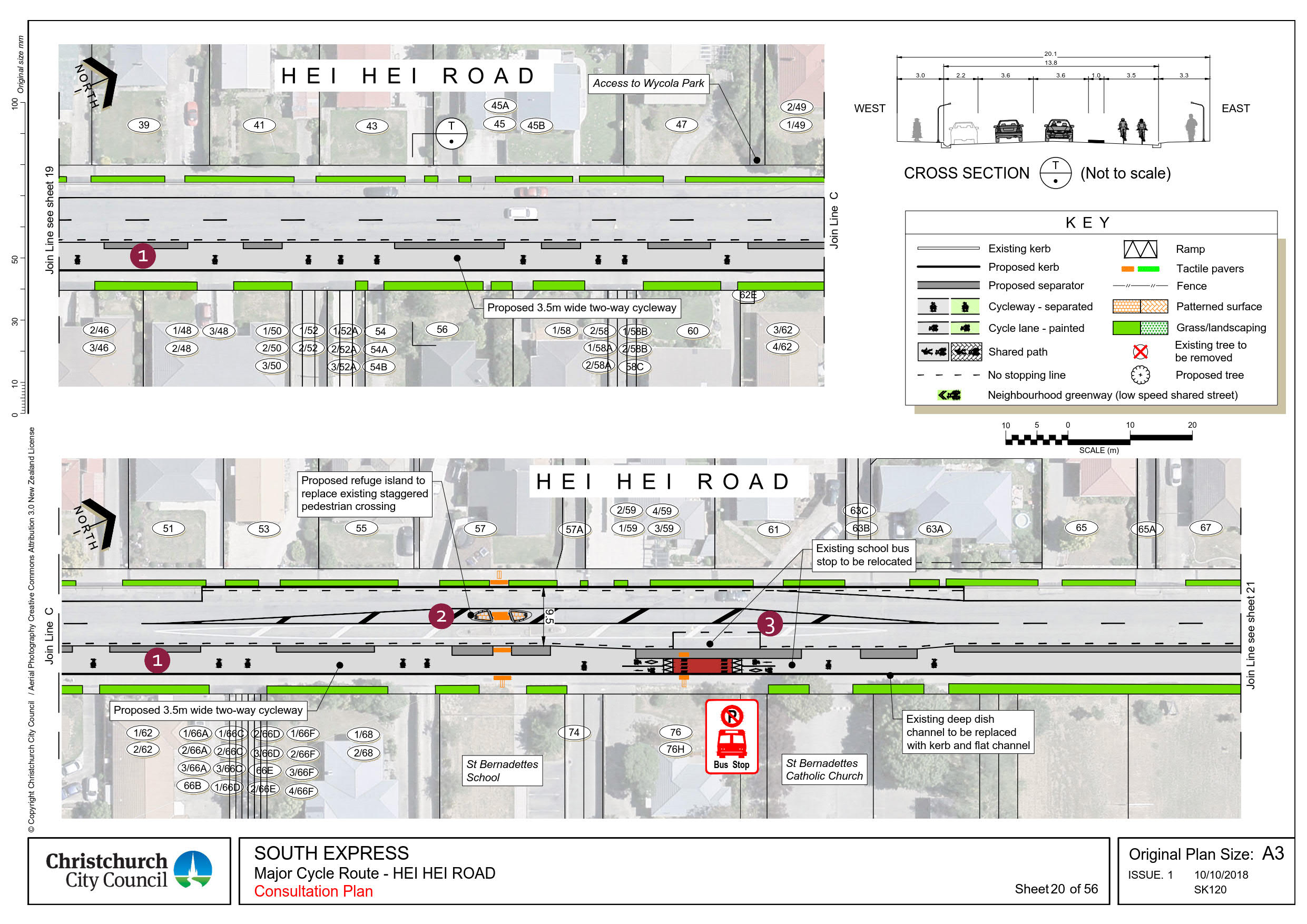

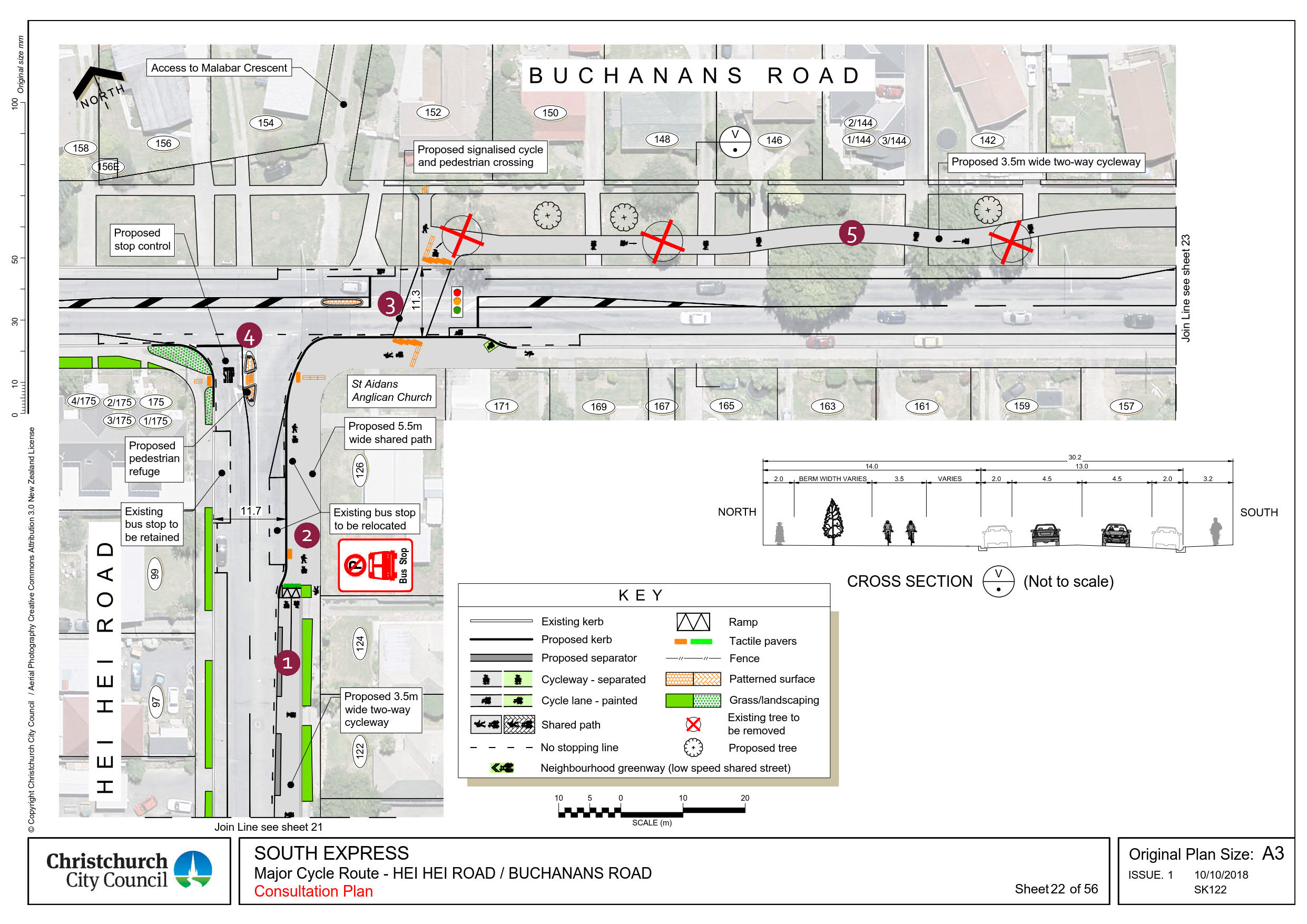
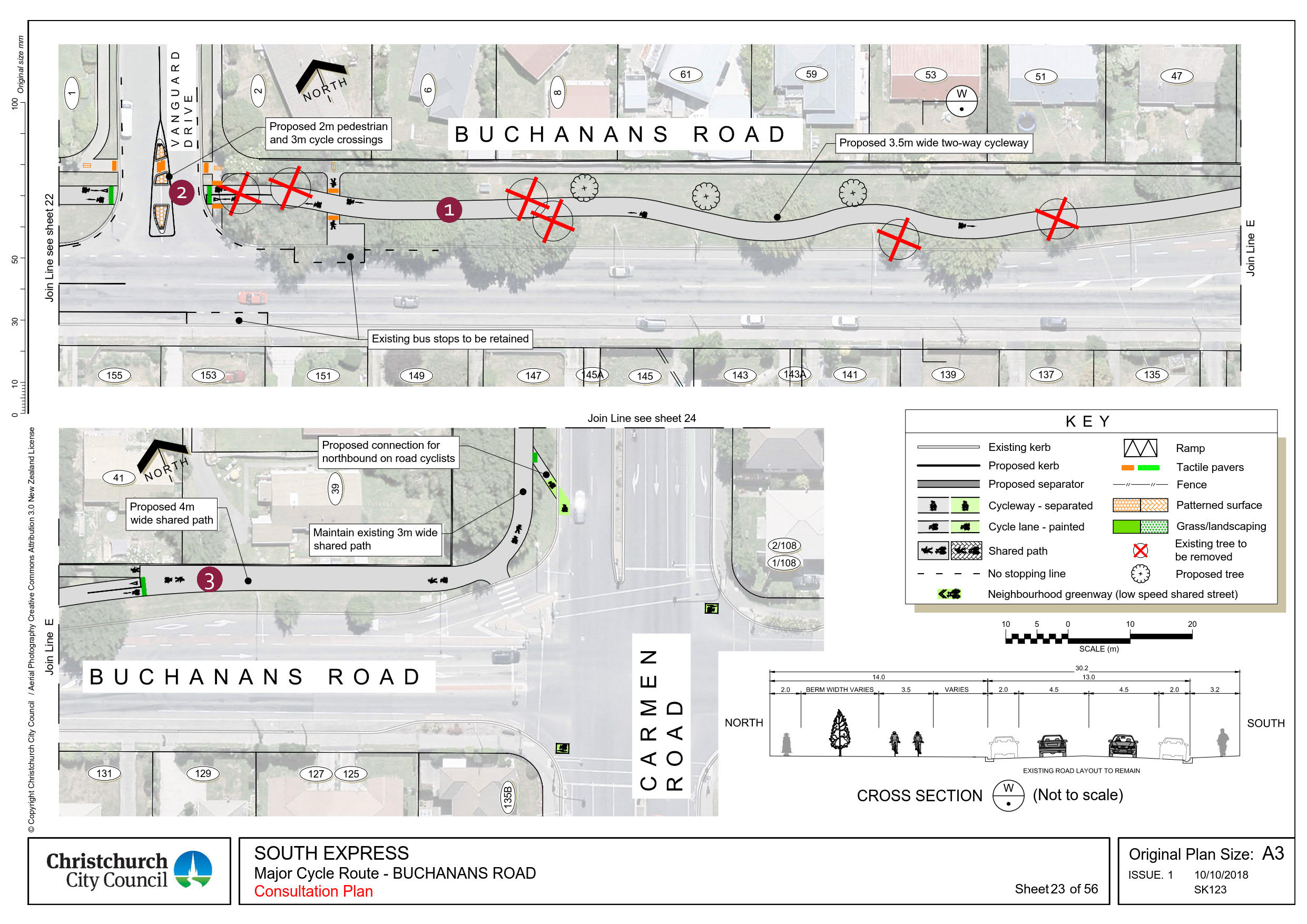
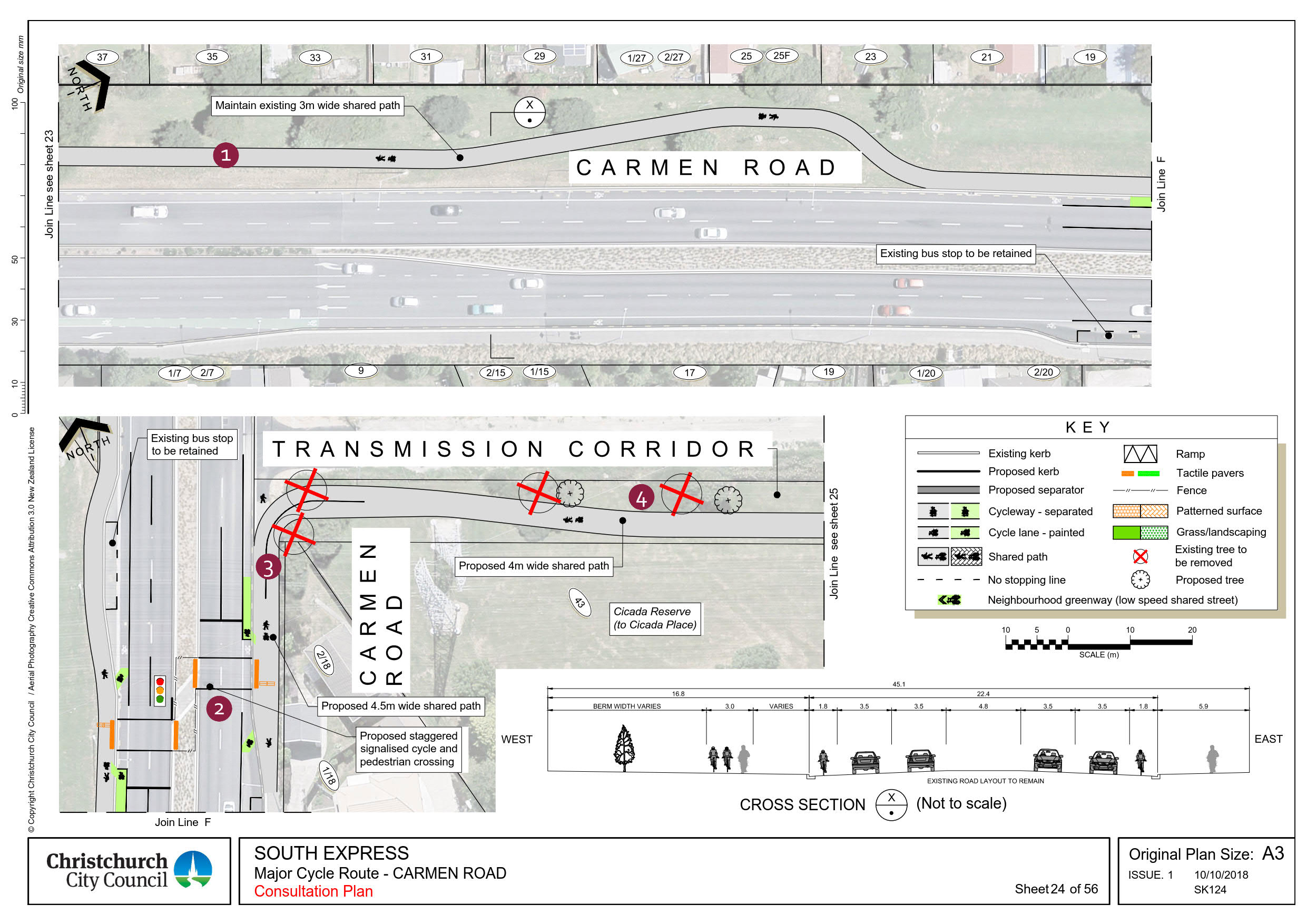
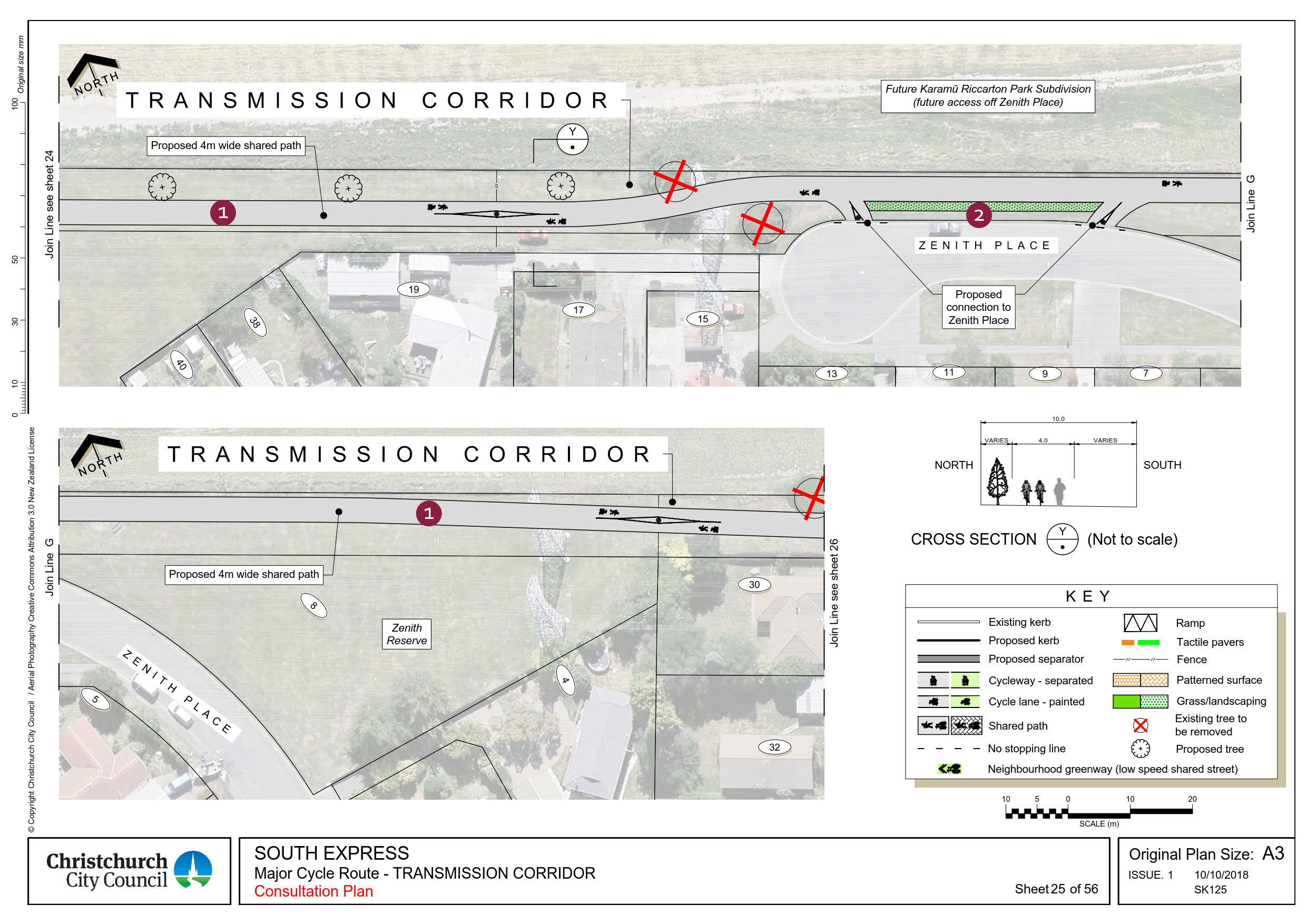
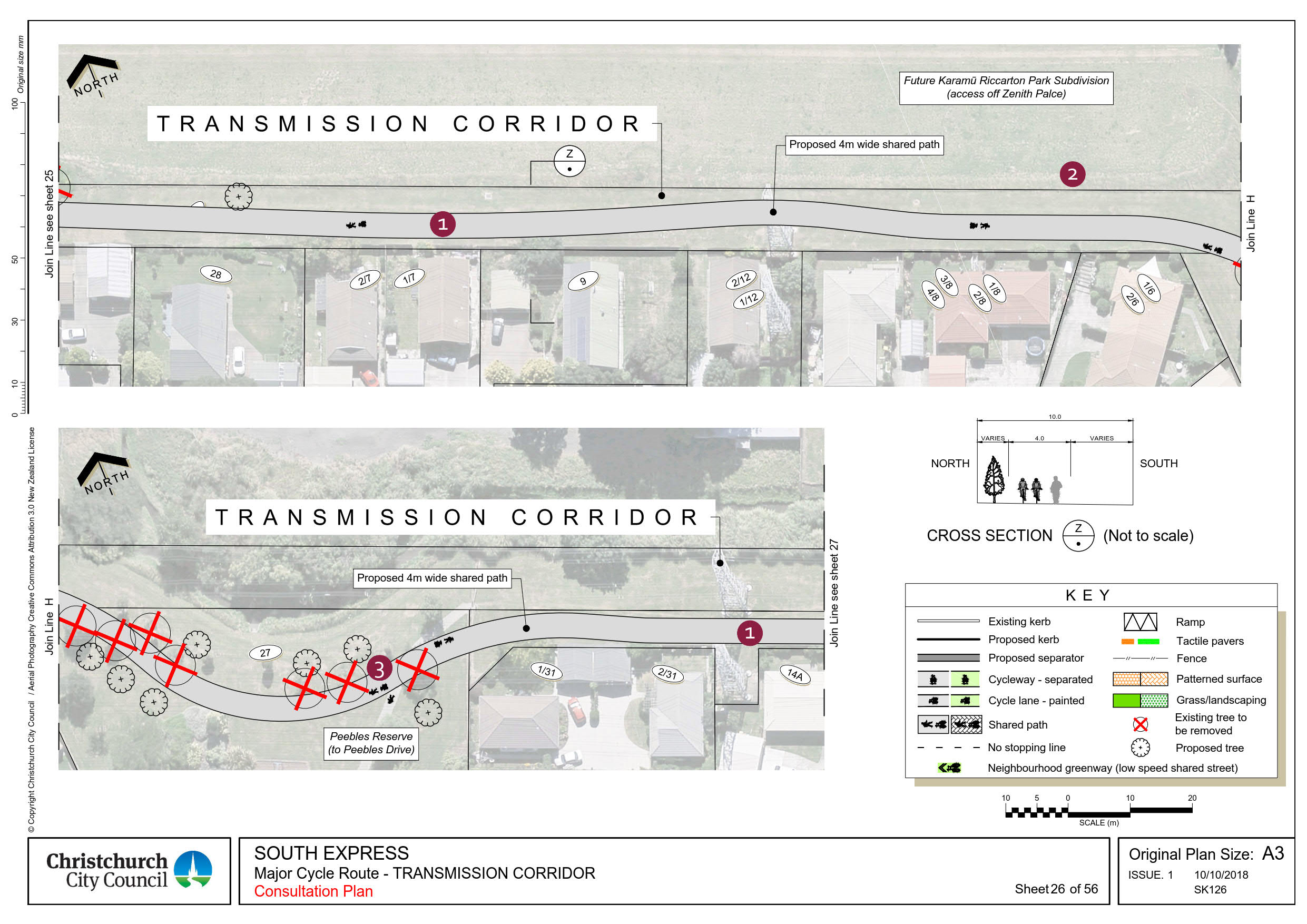
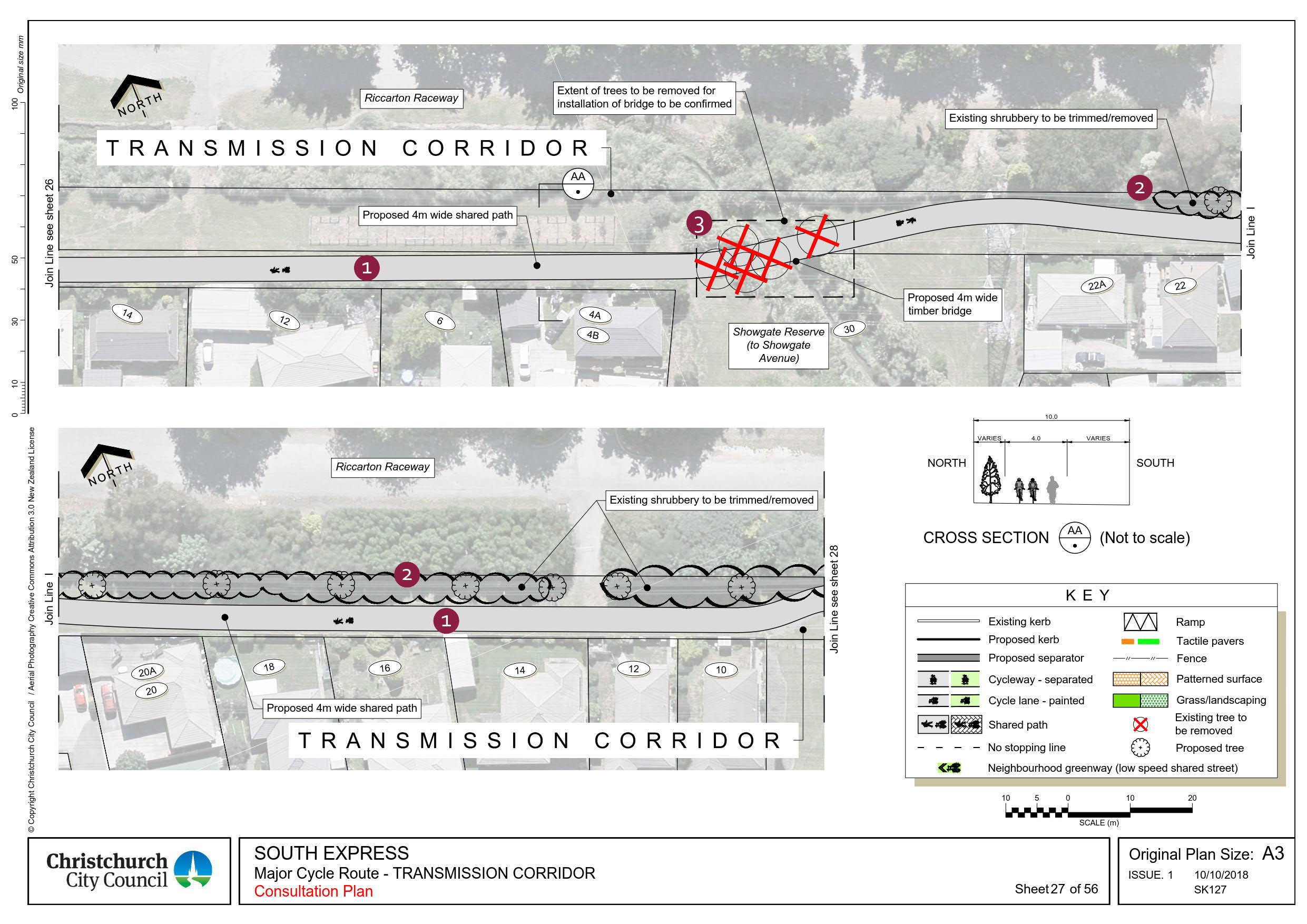
 Artist impression: Middlepark Road
Artist impression: Middlepark Road

